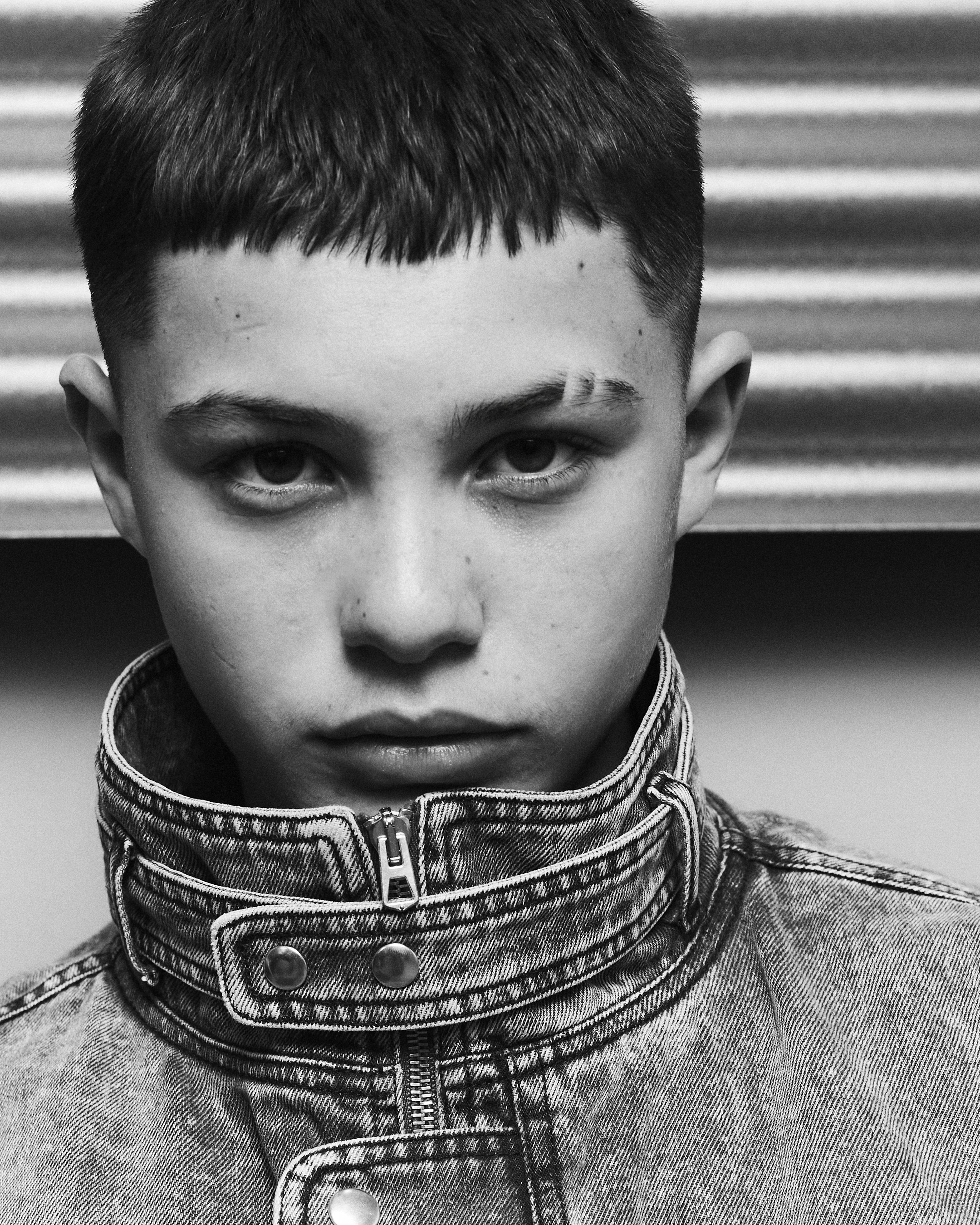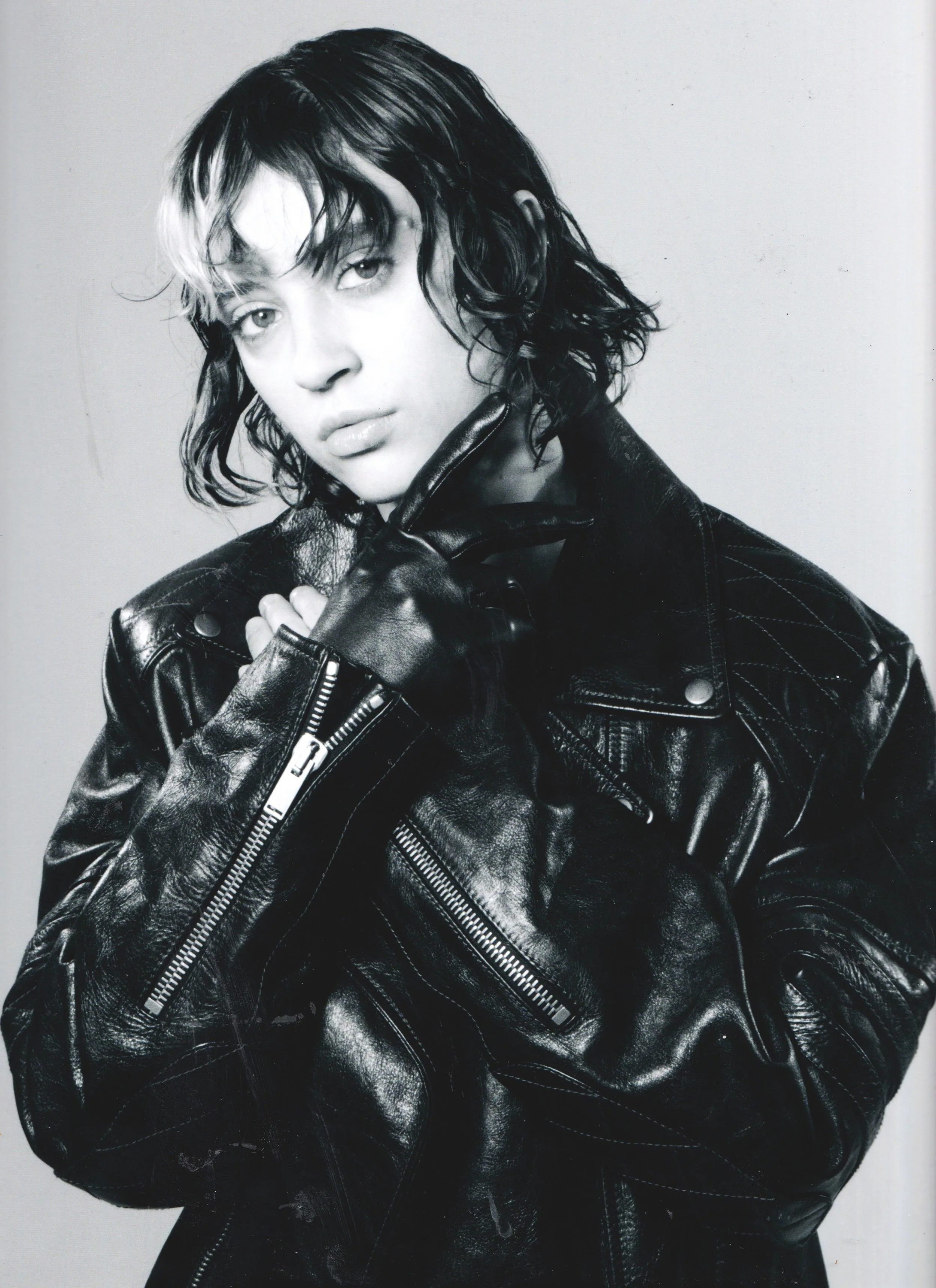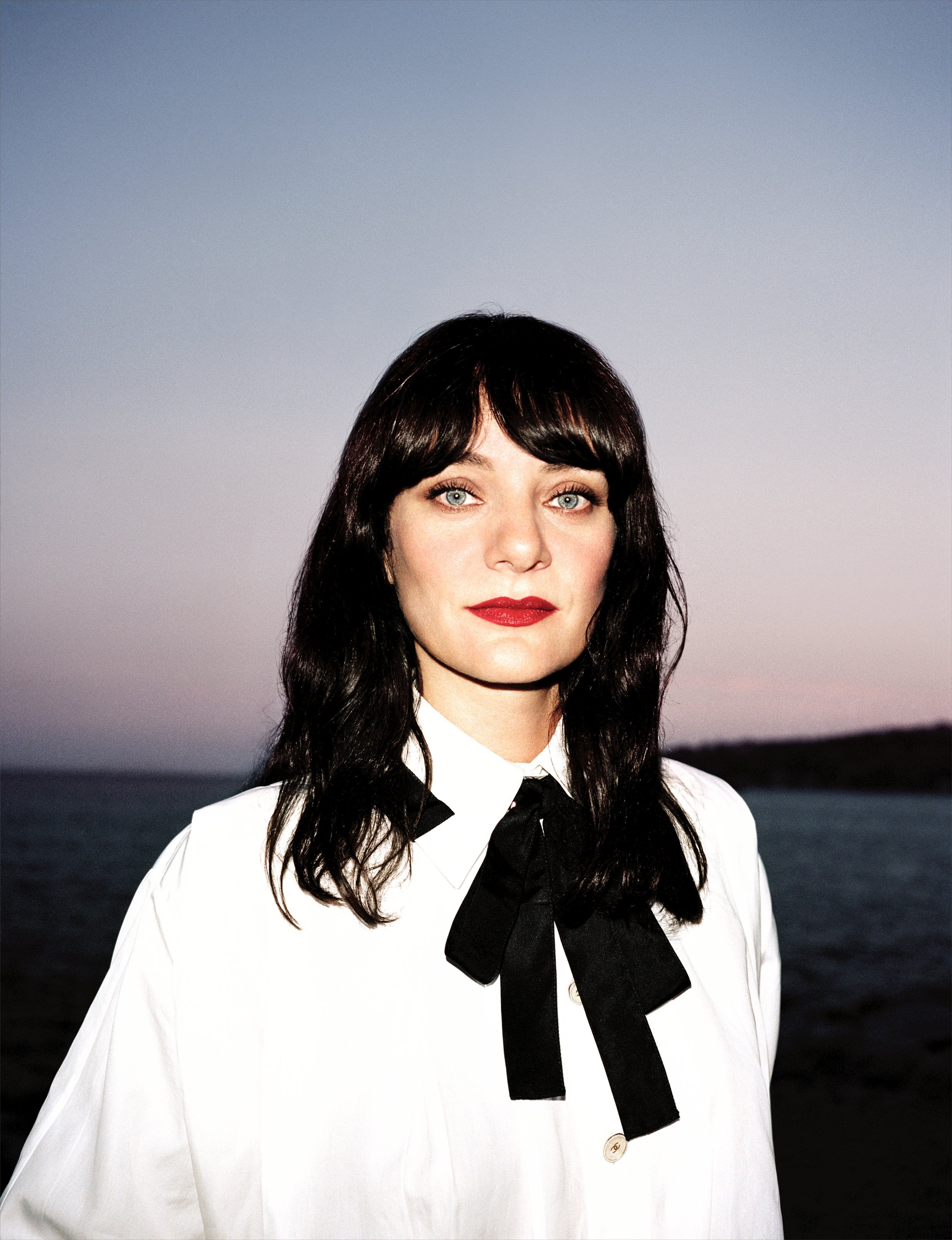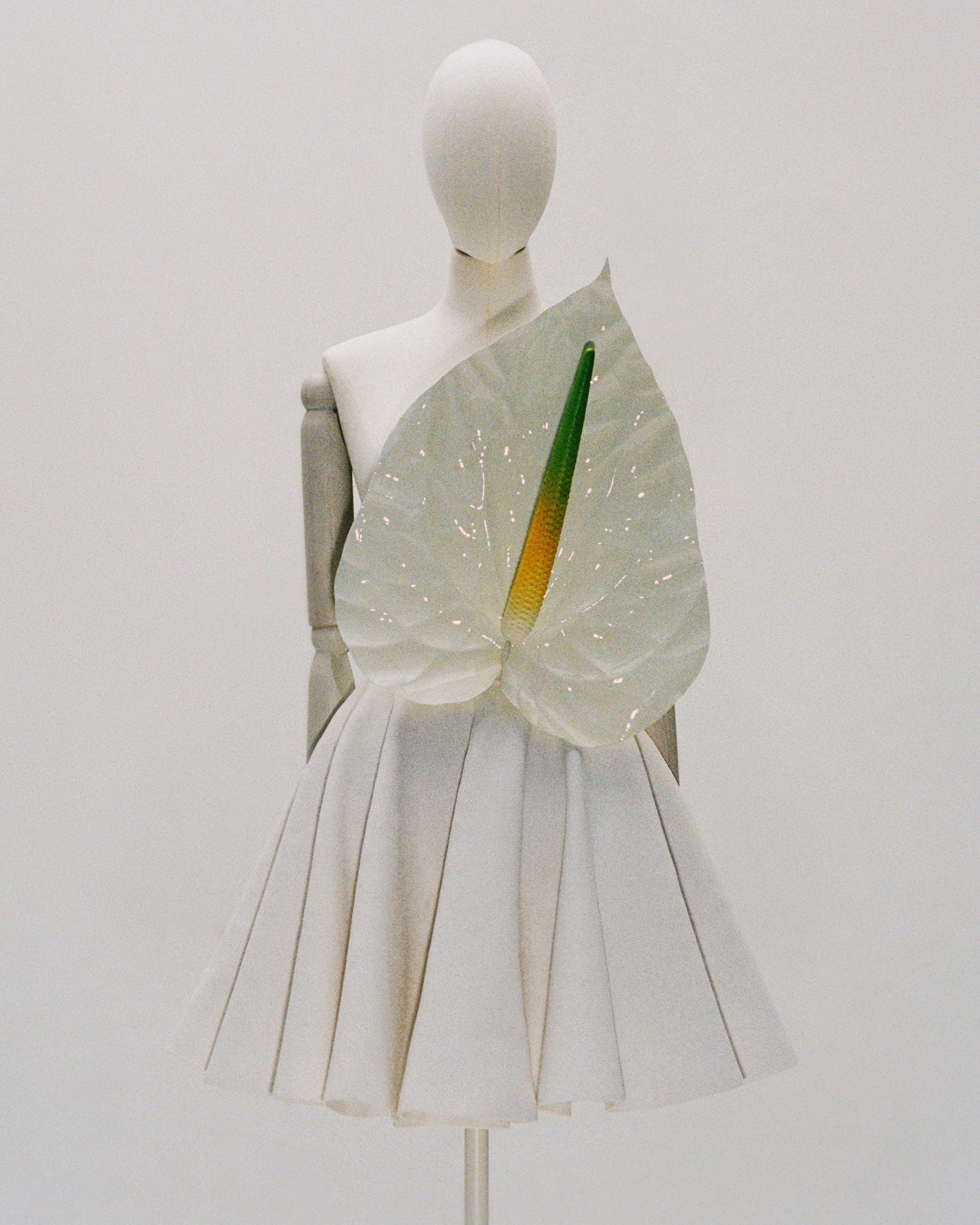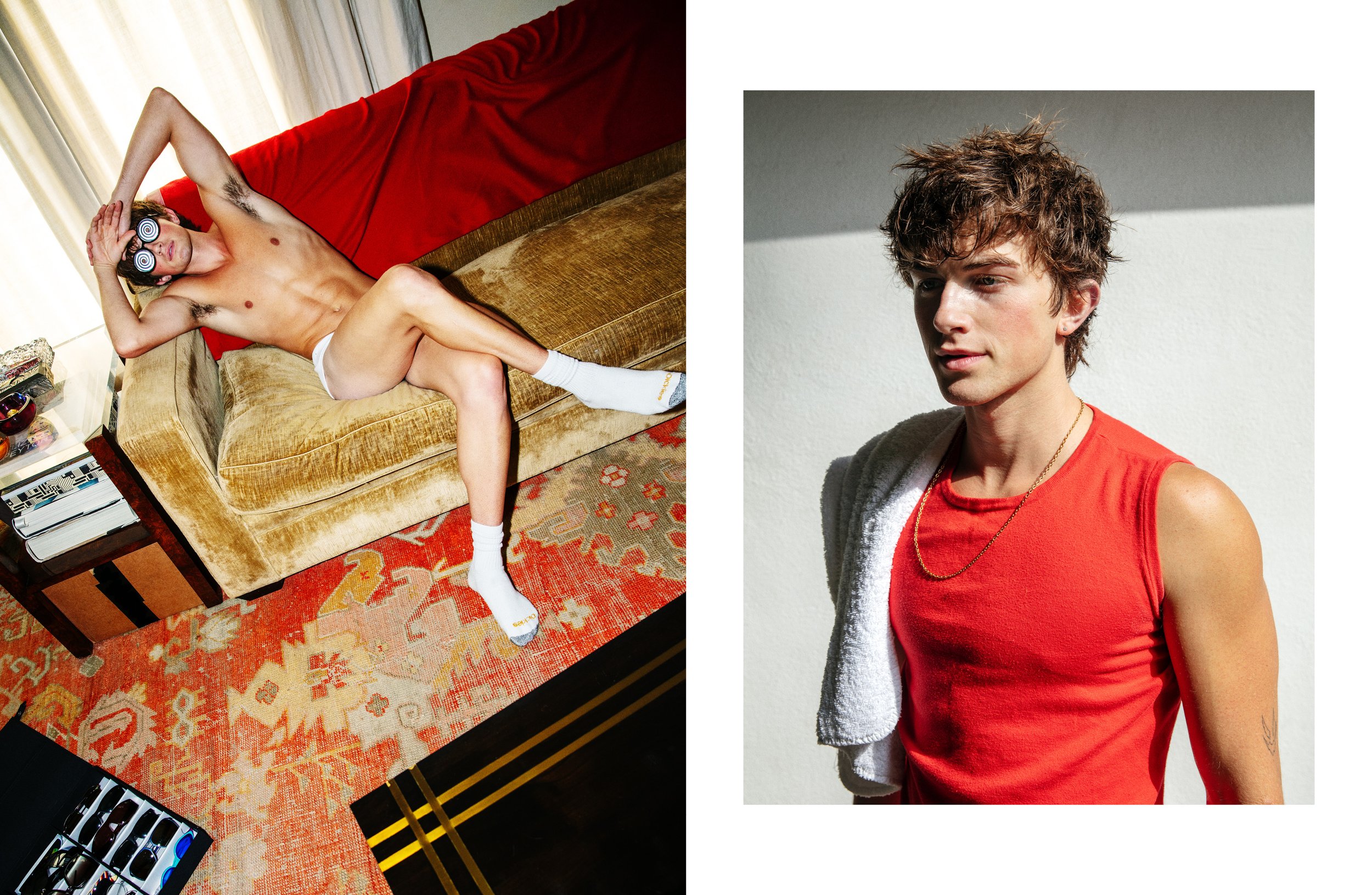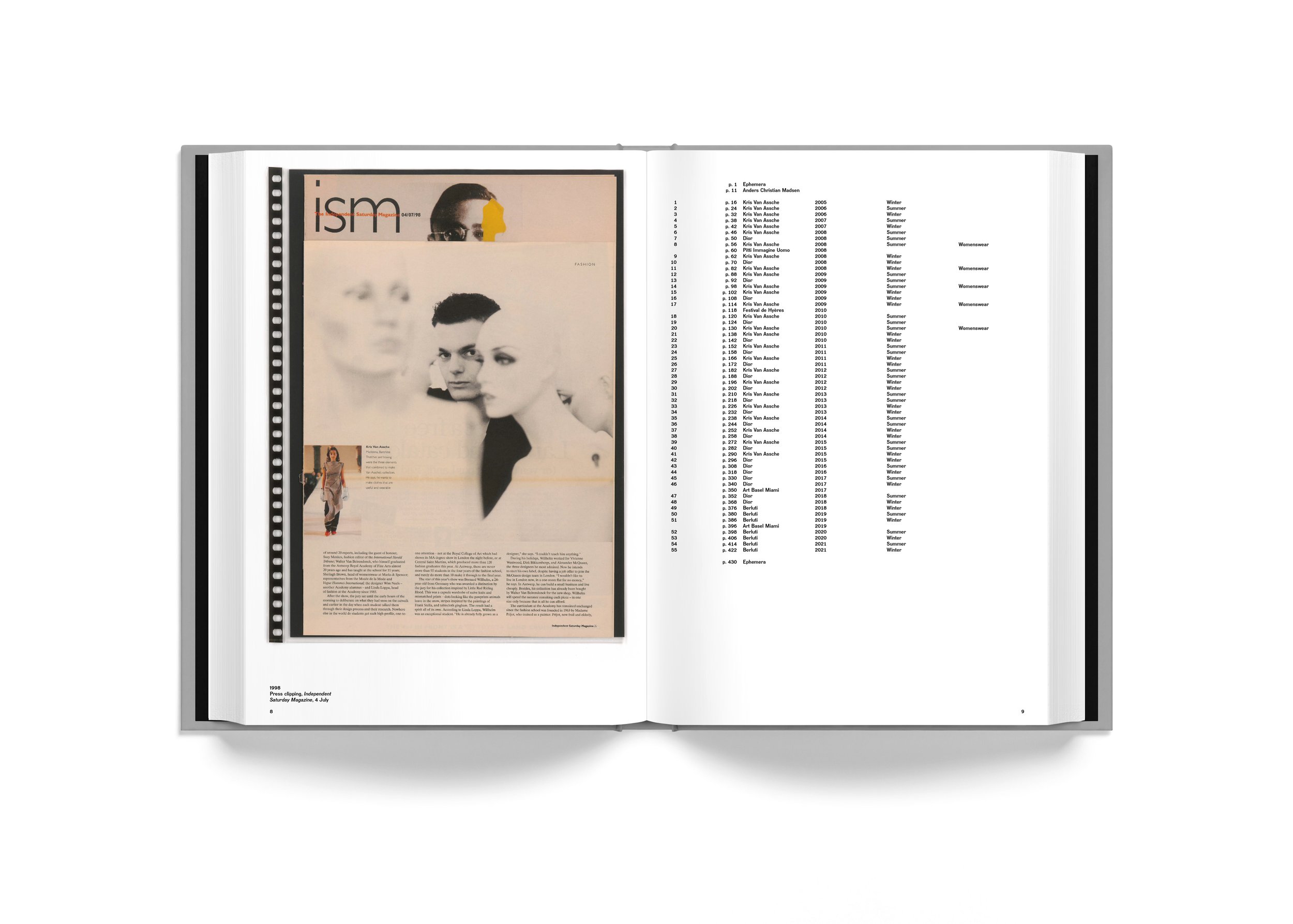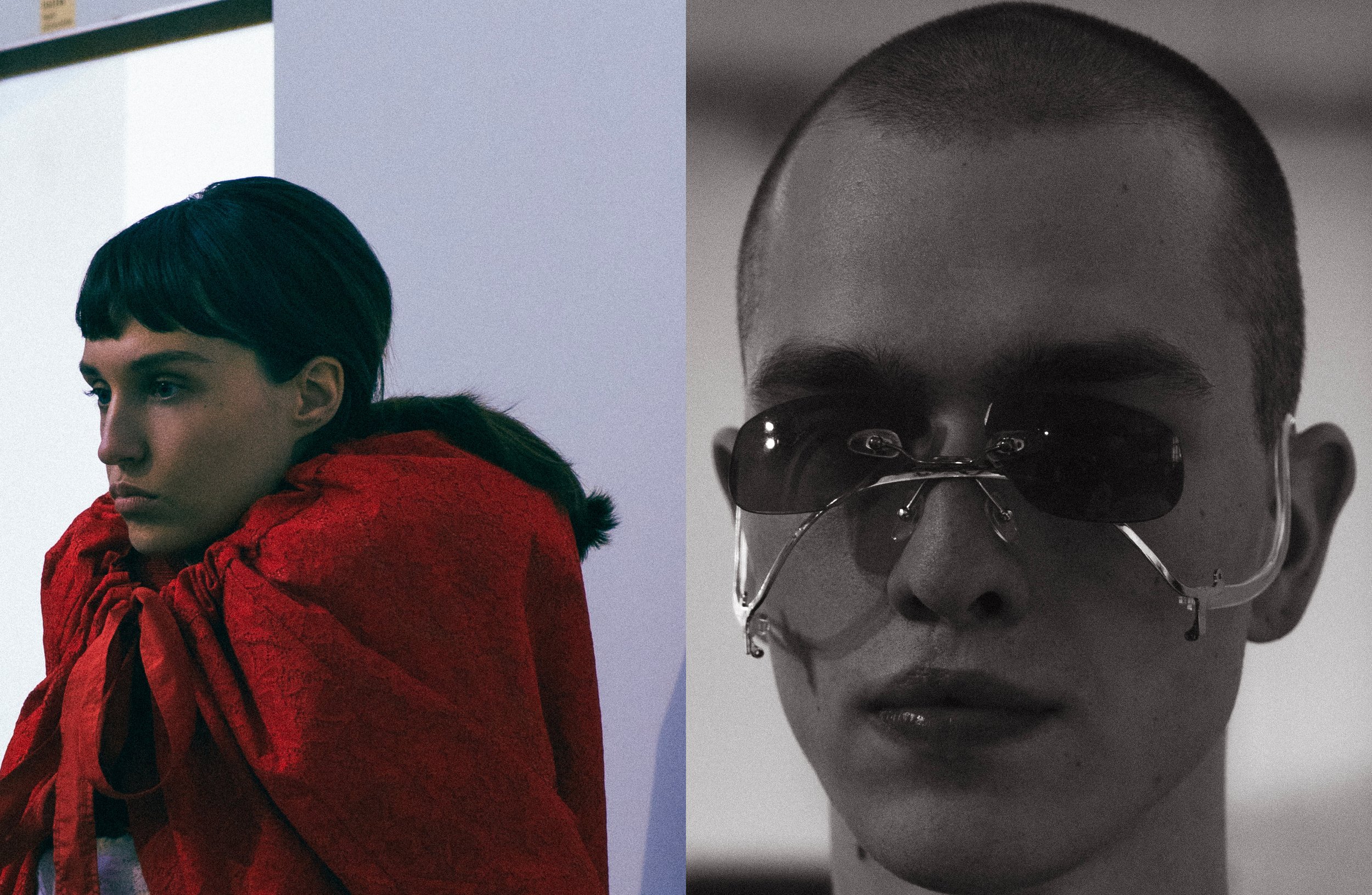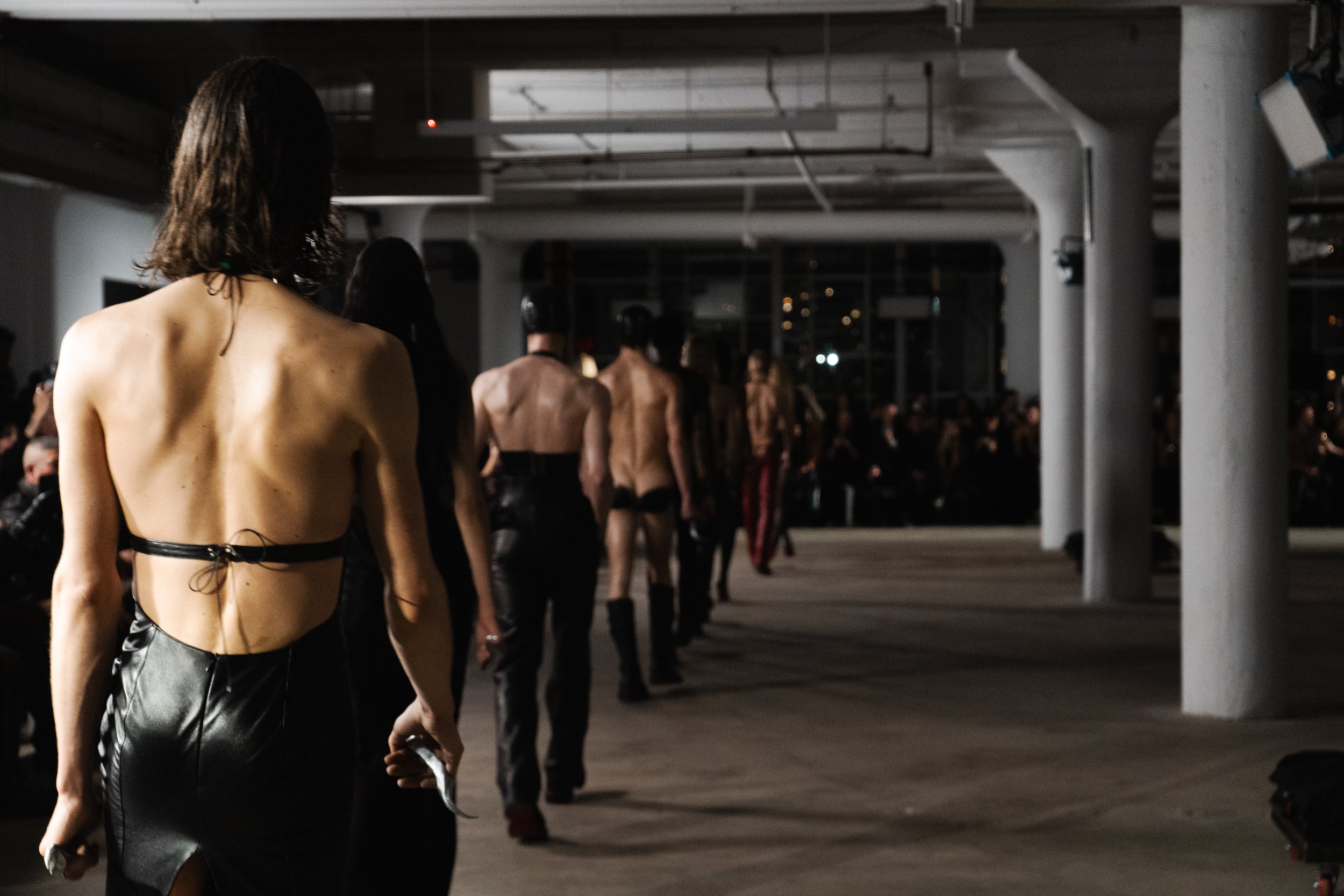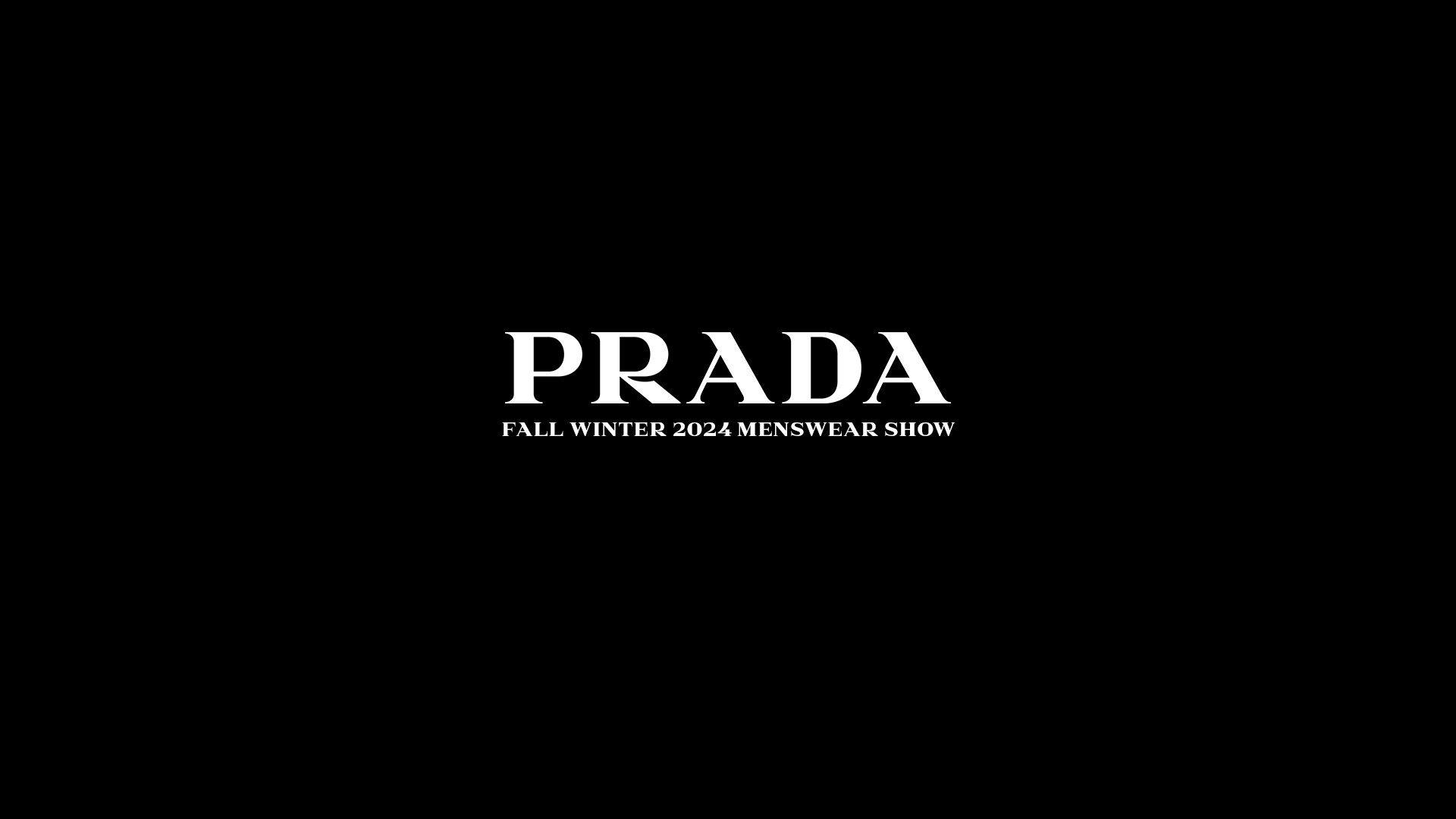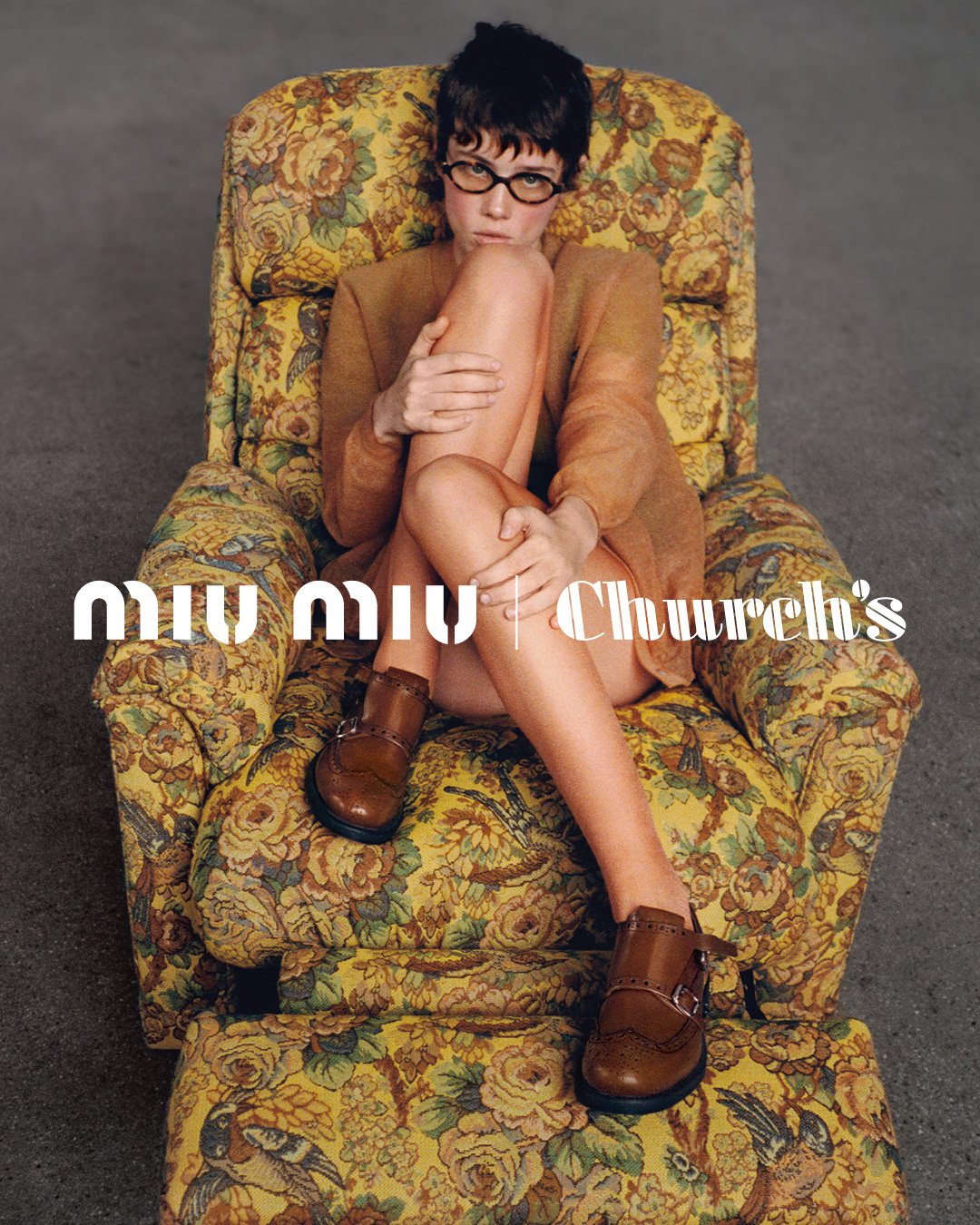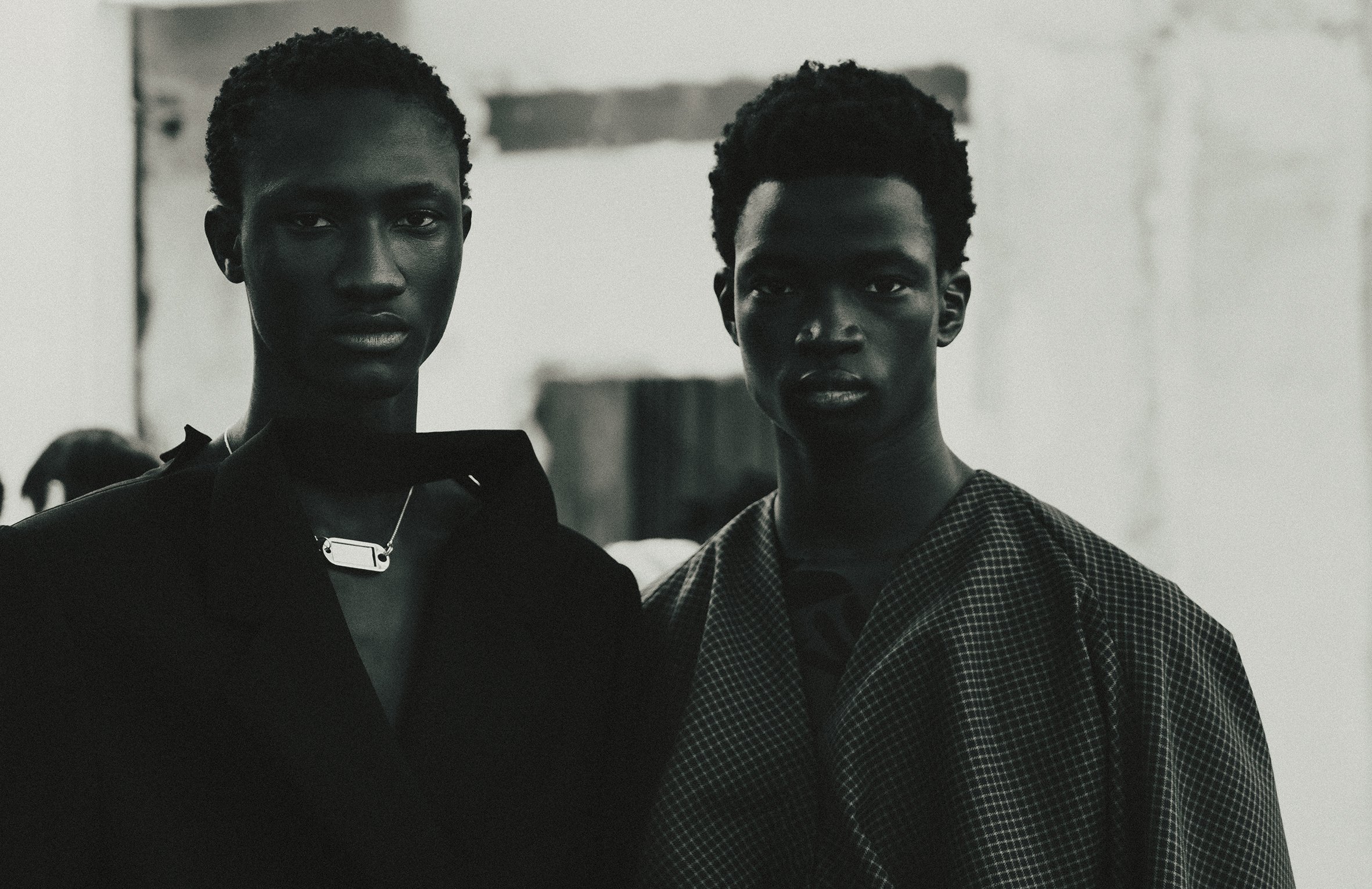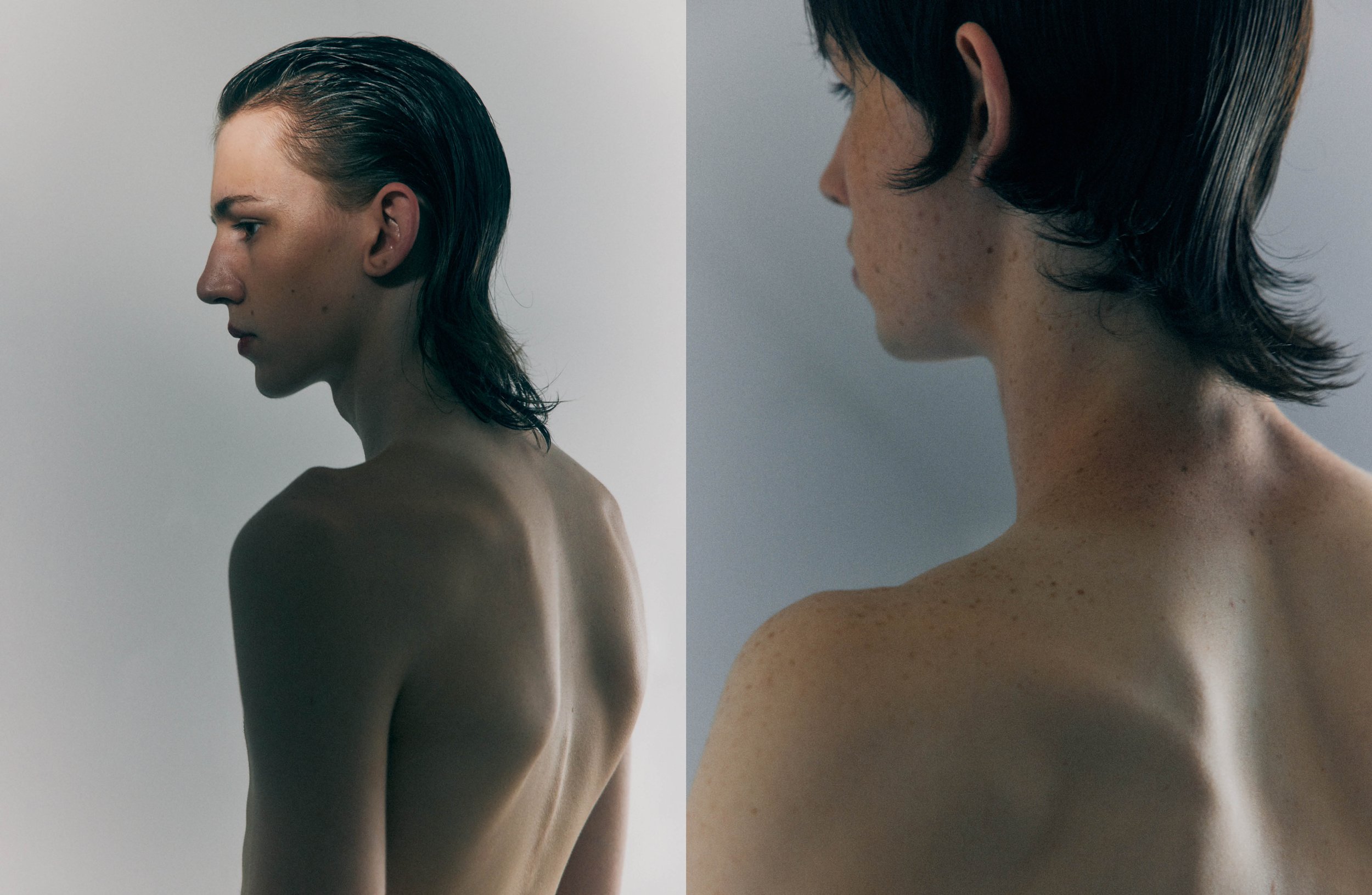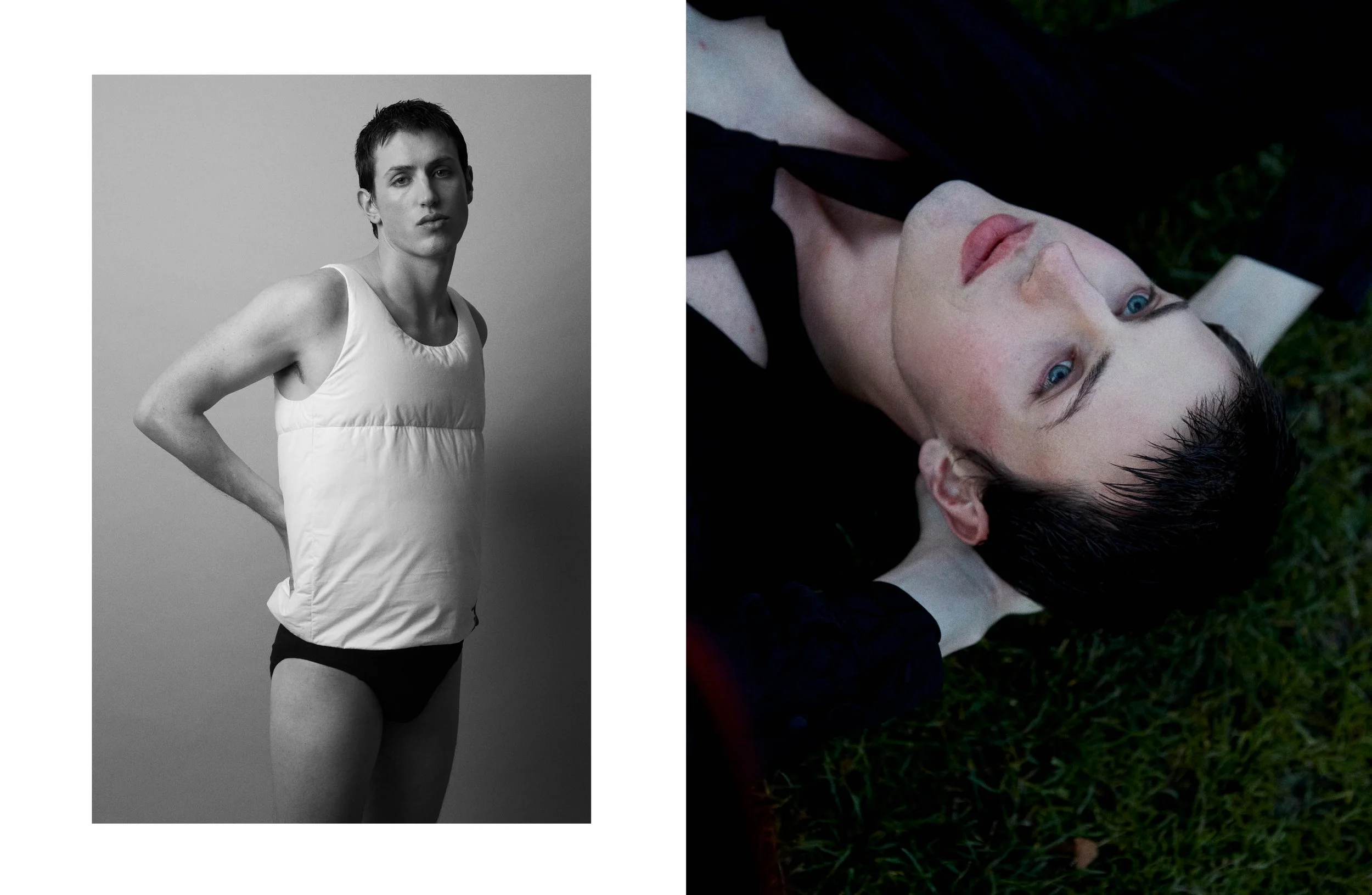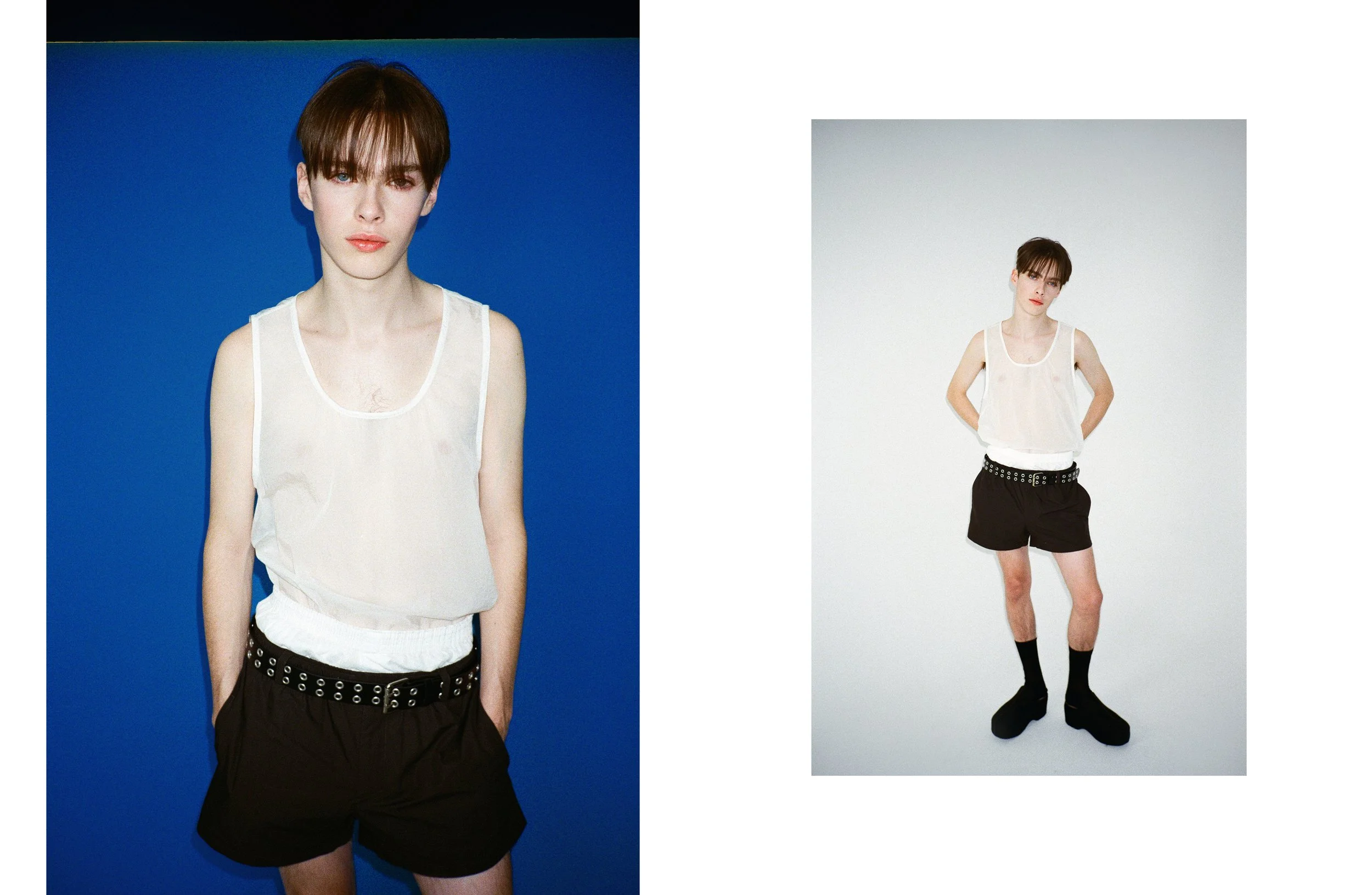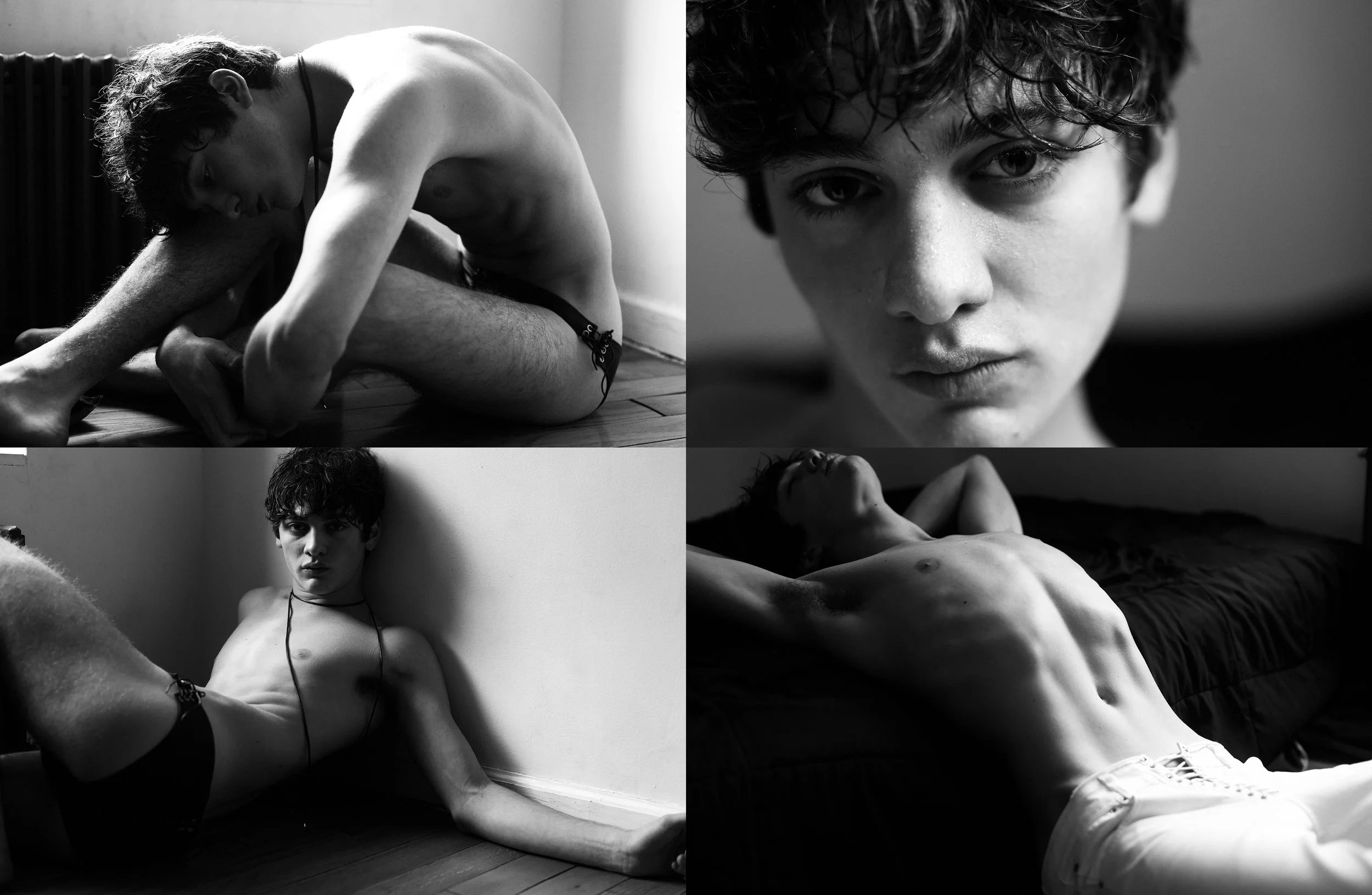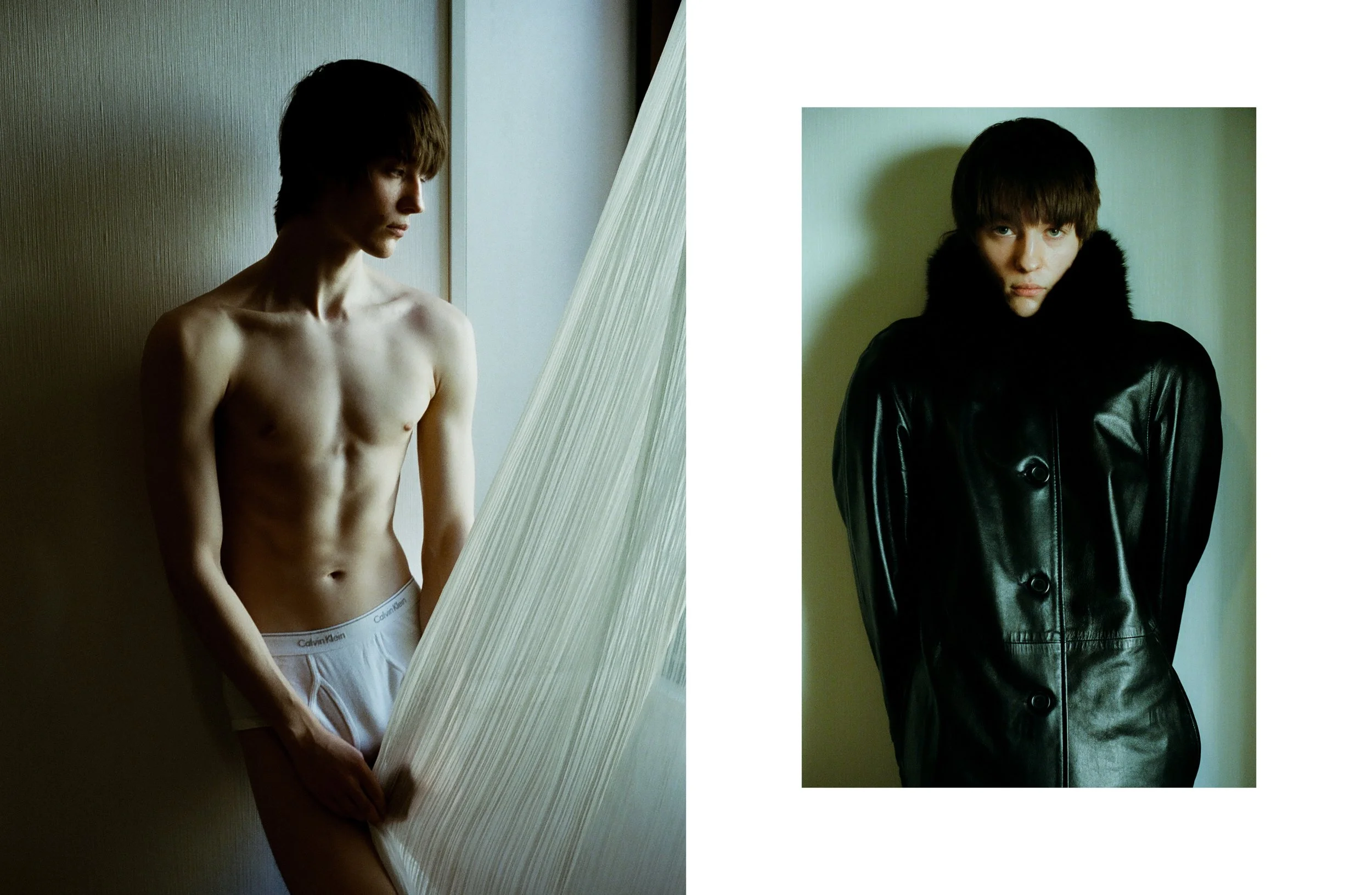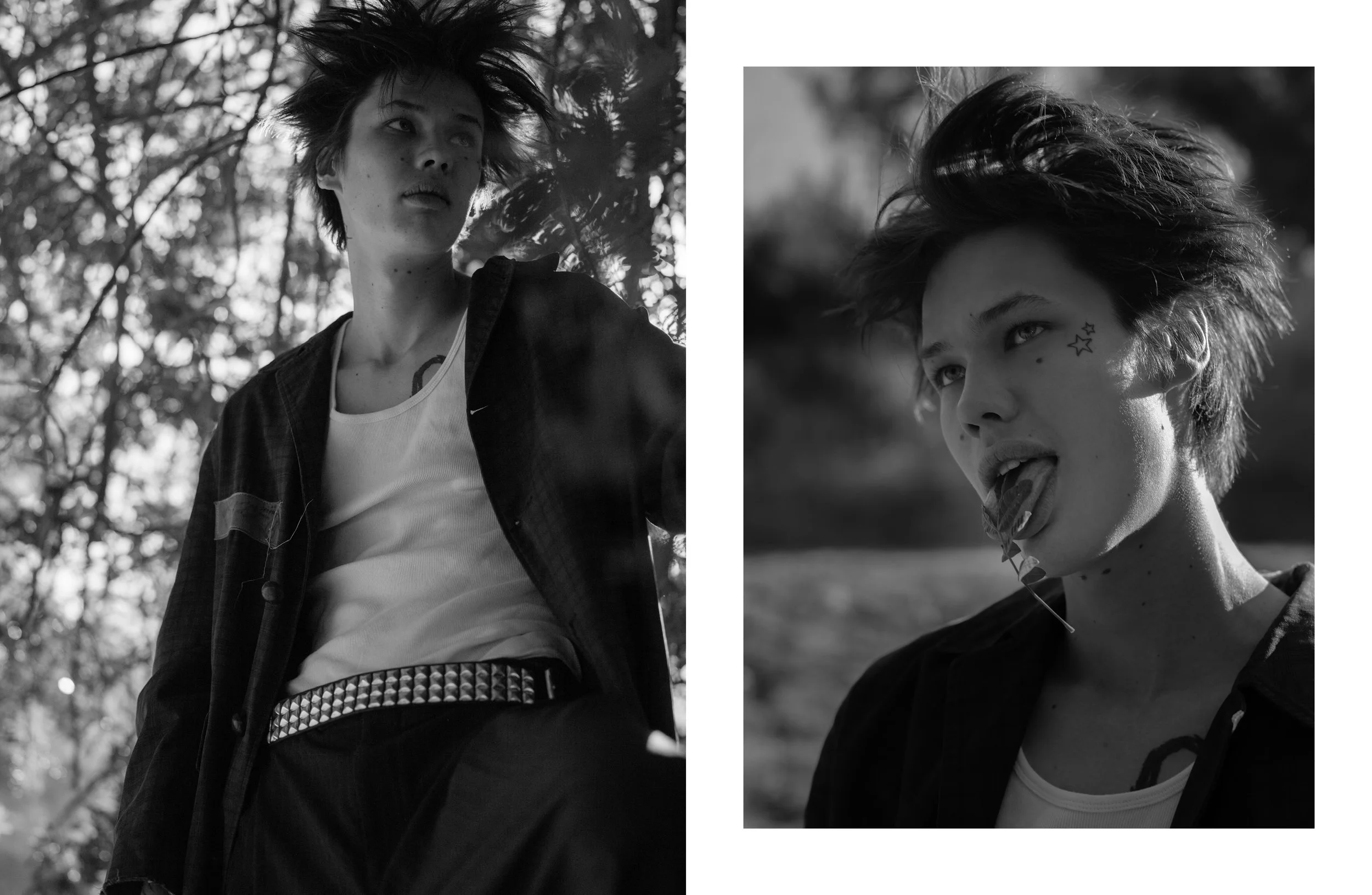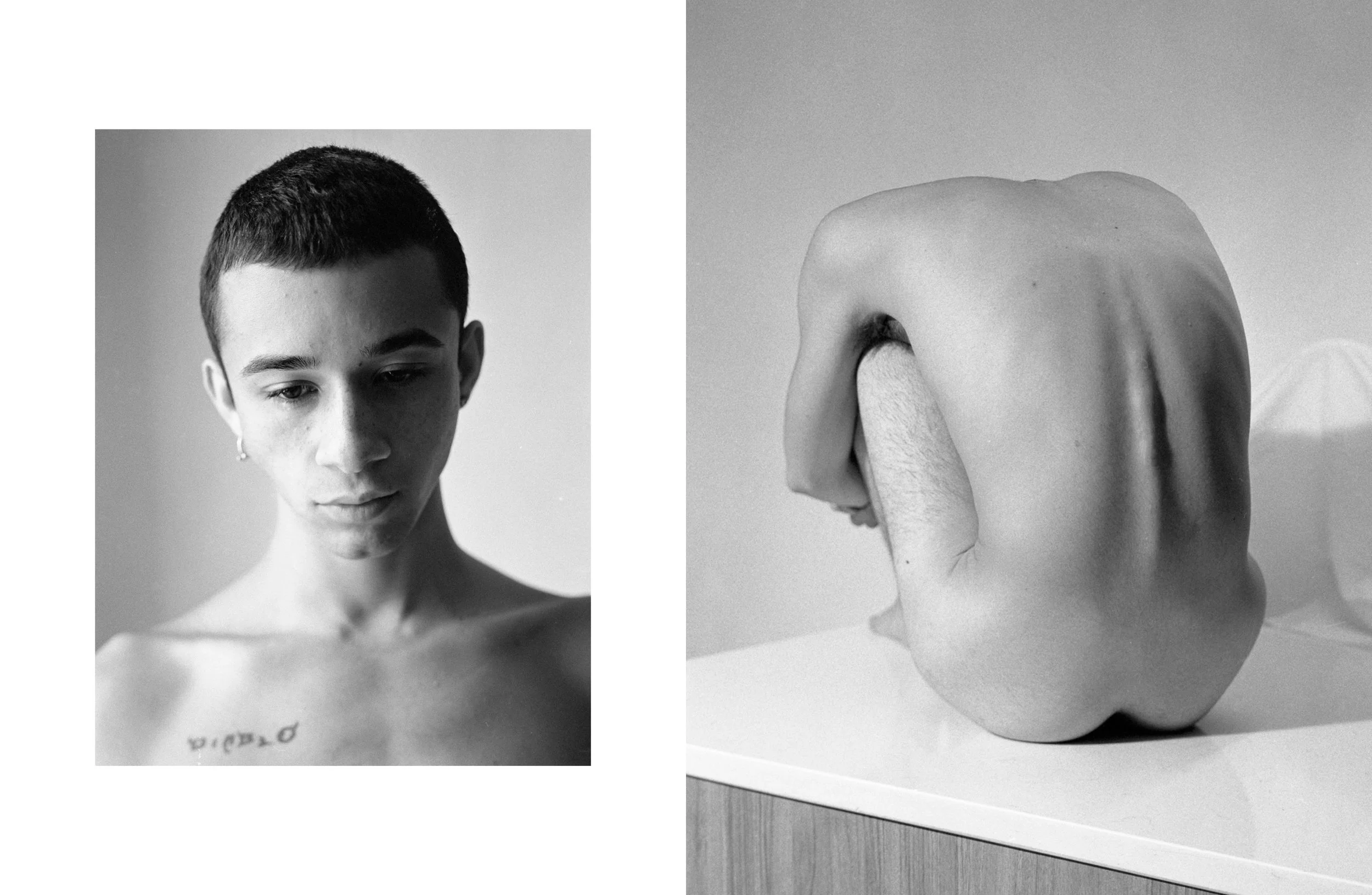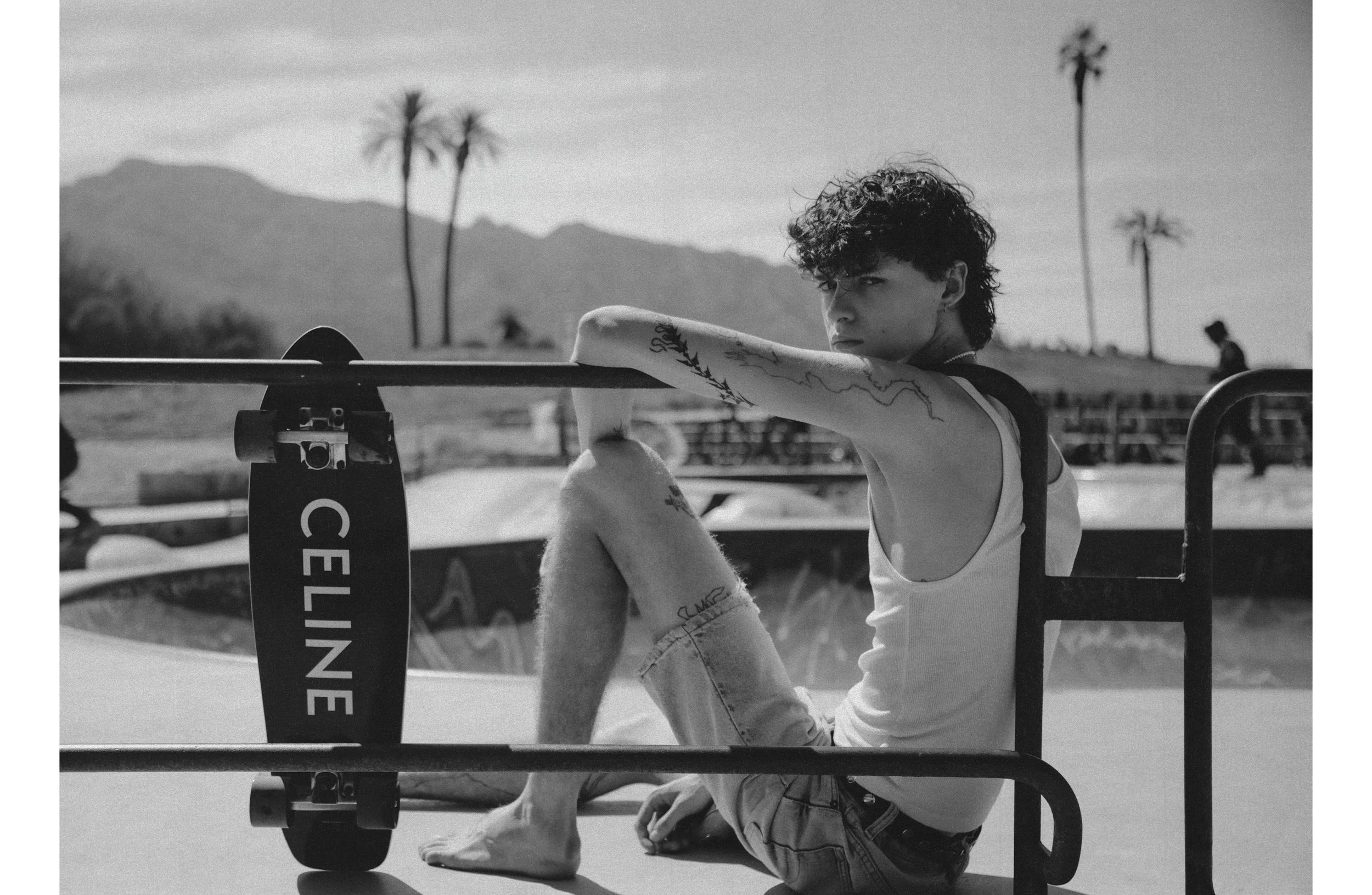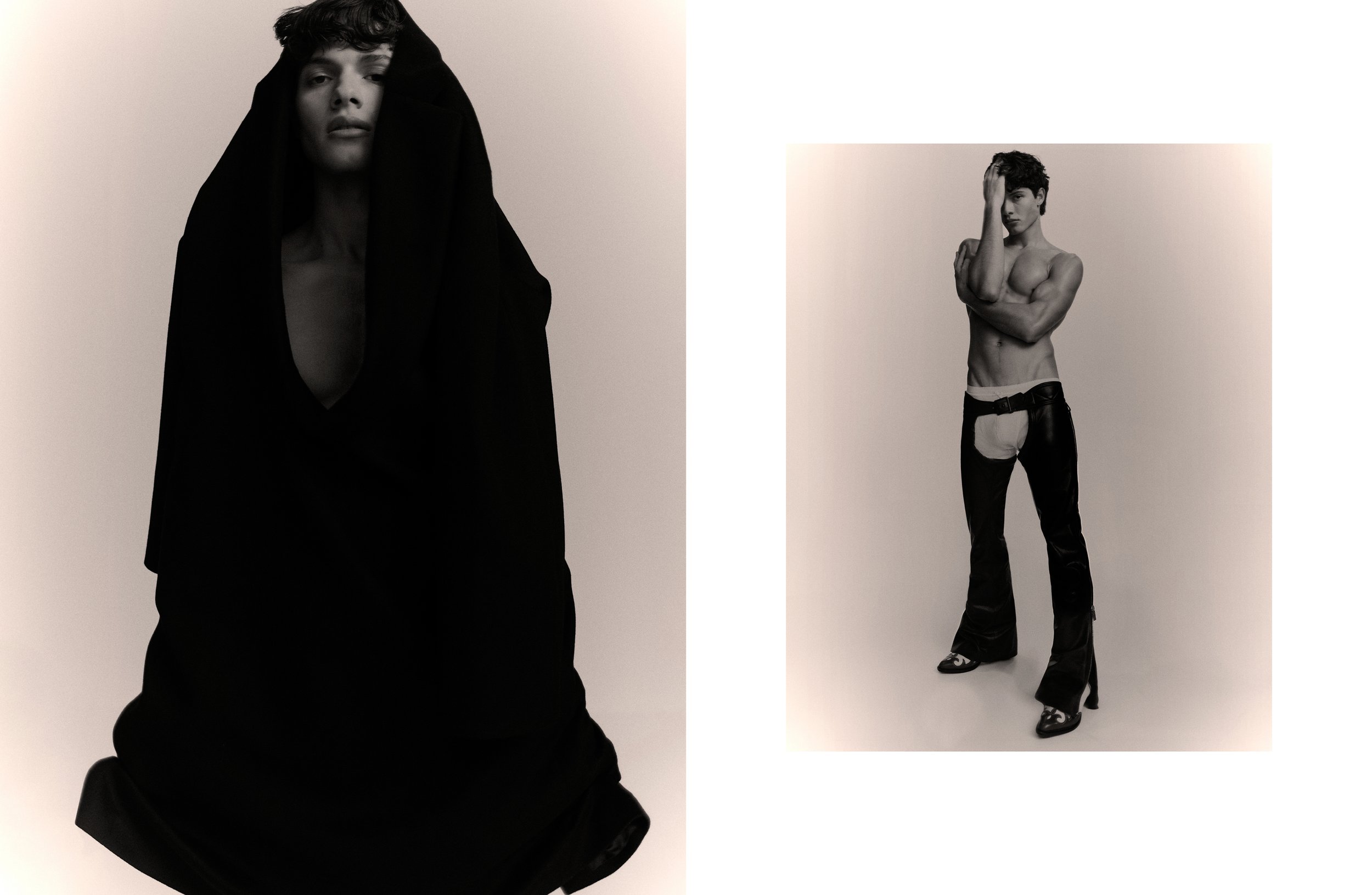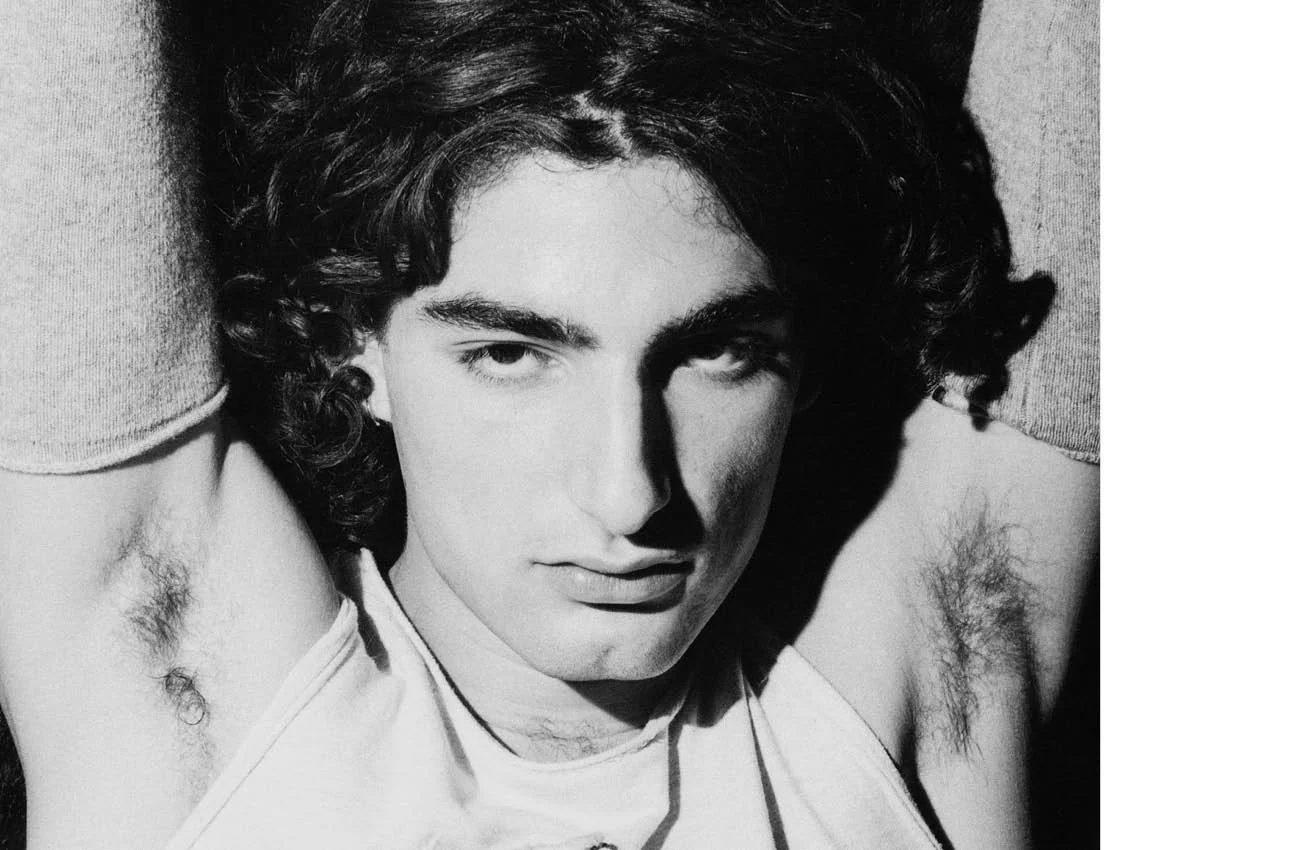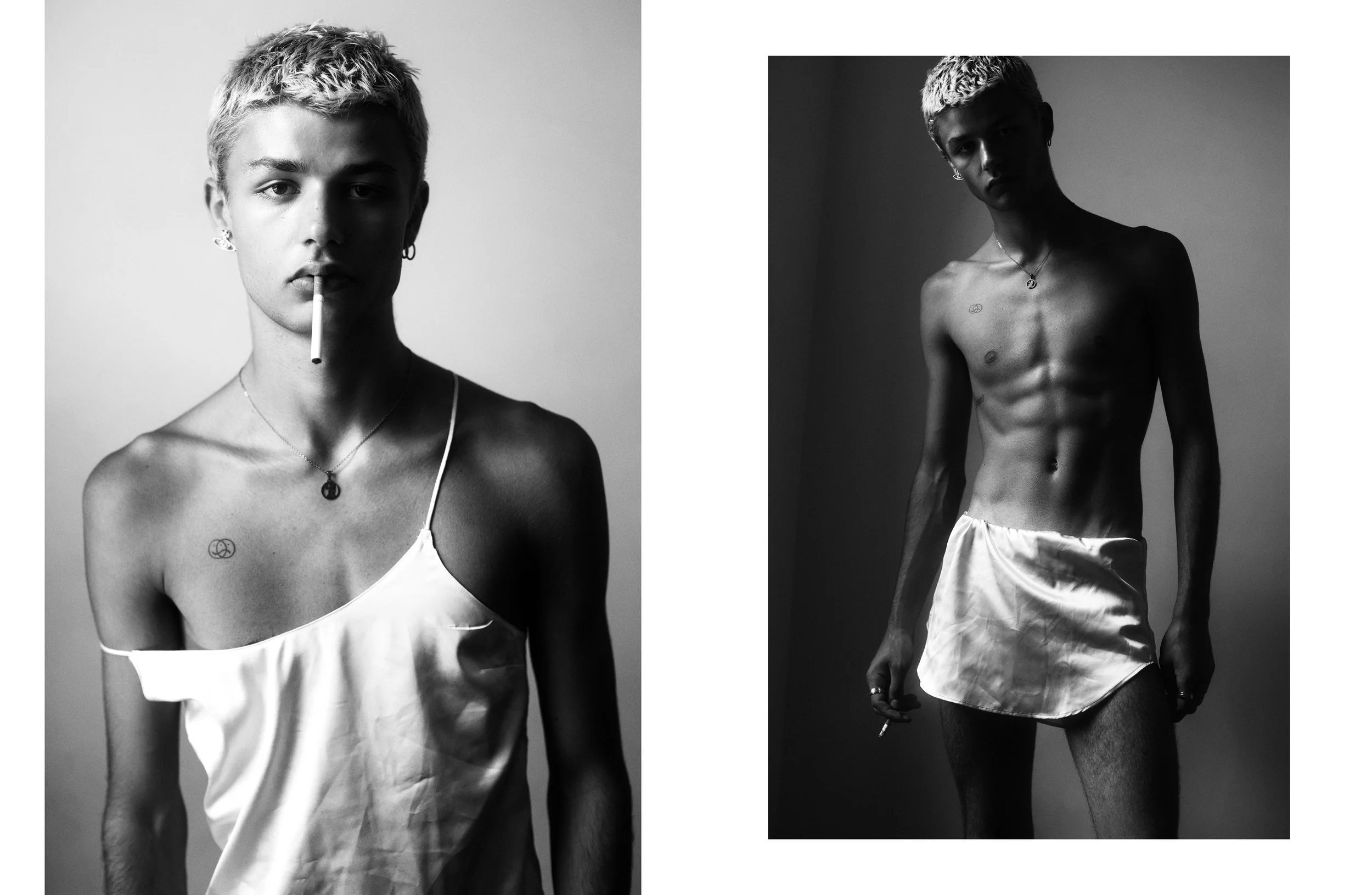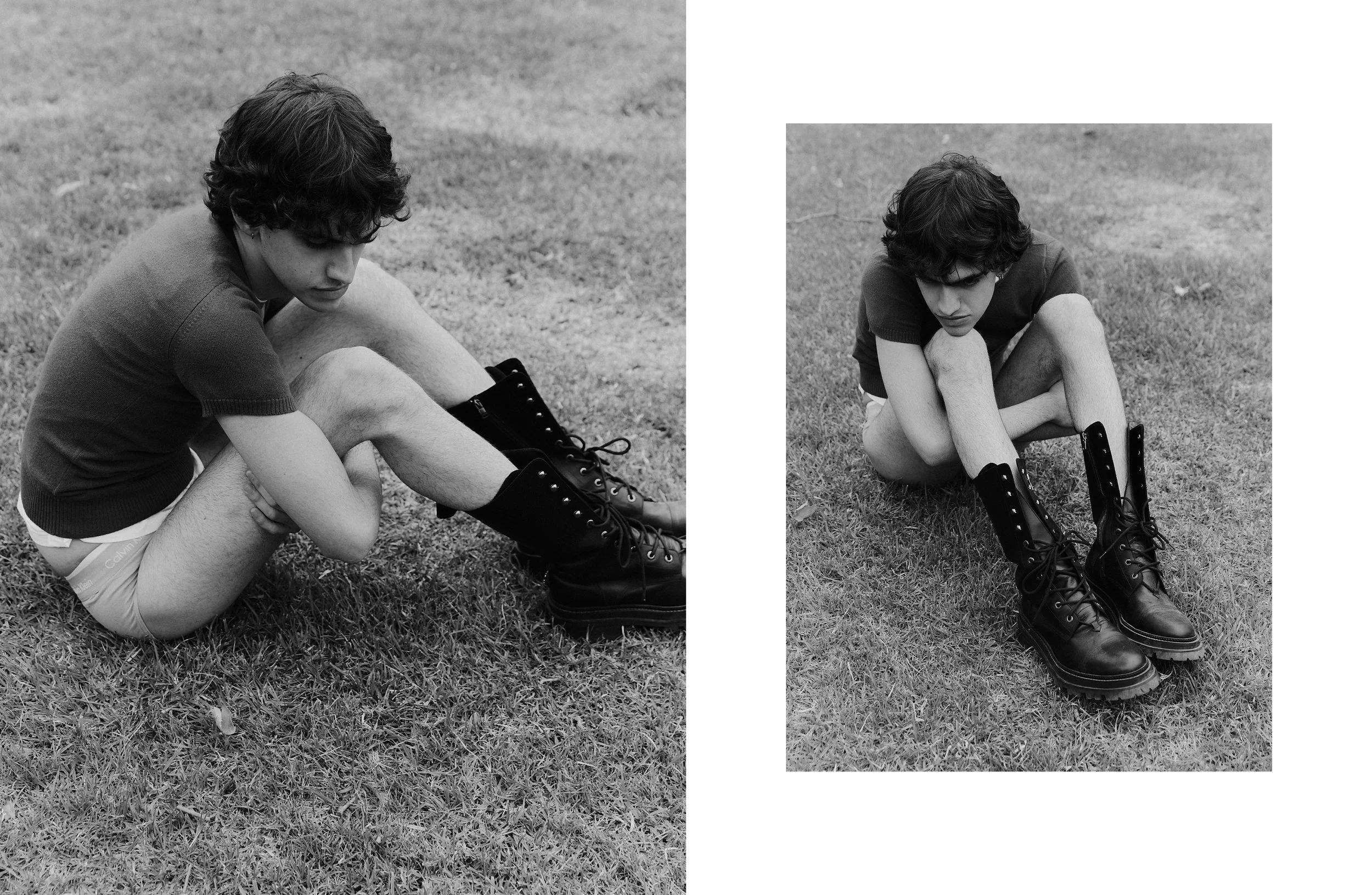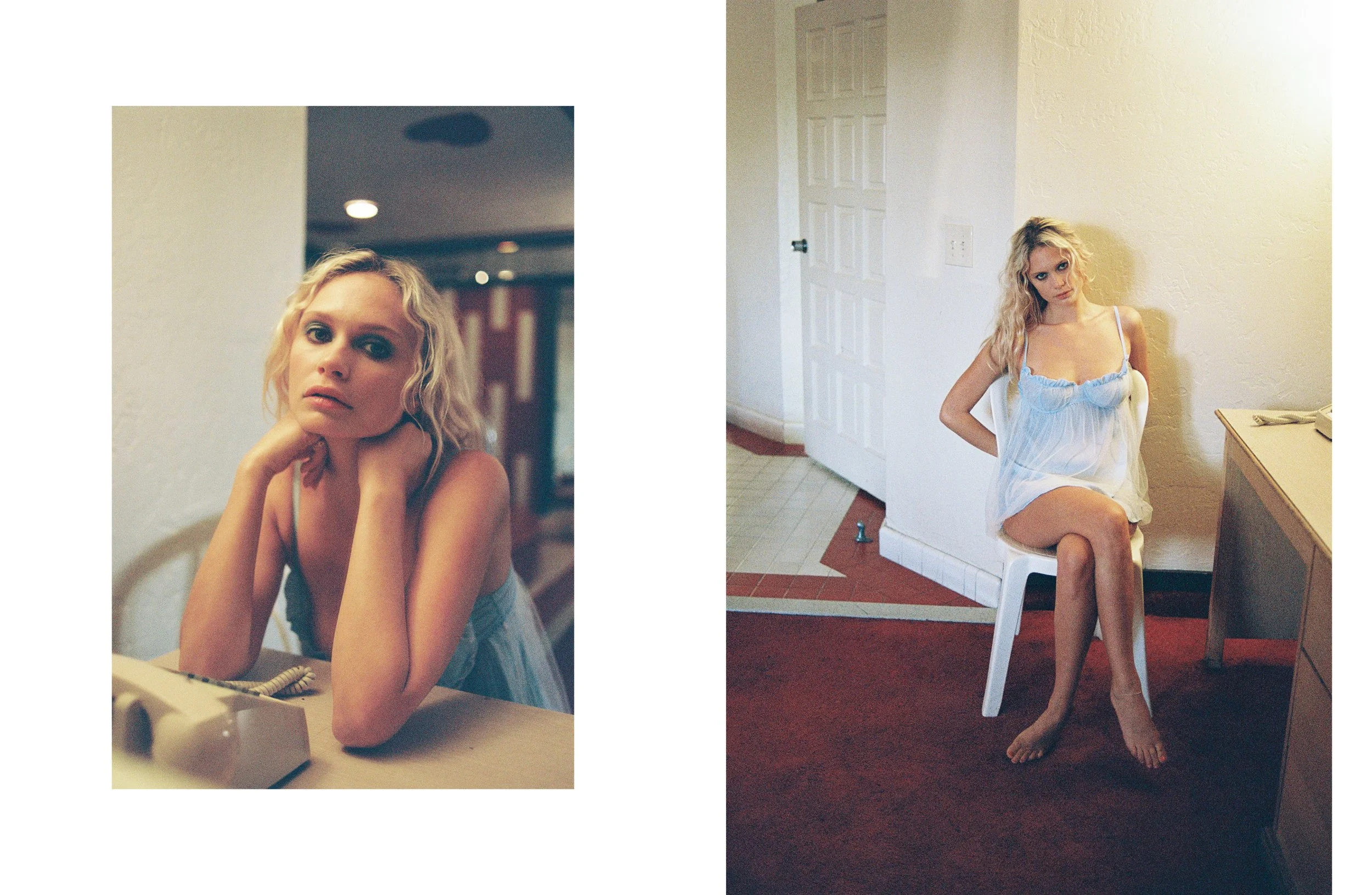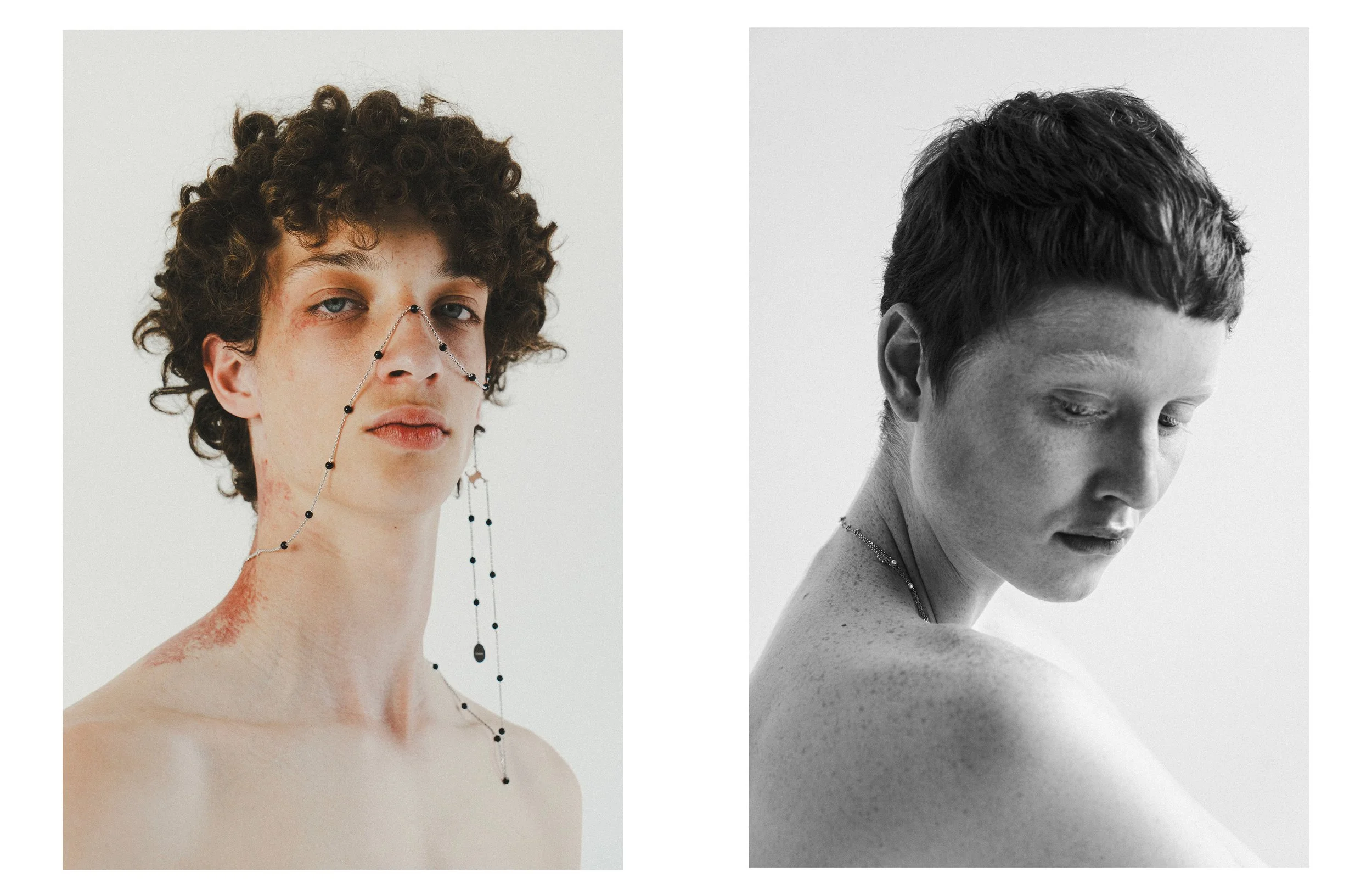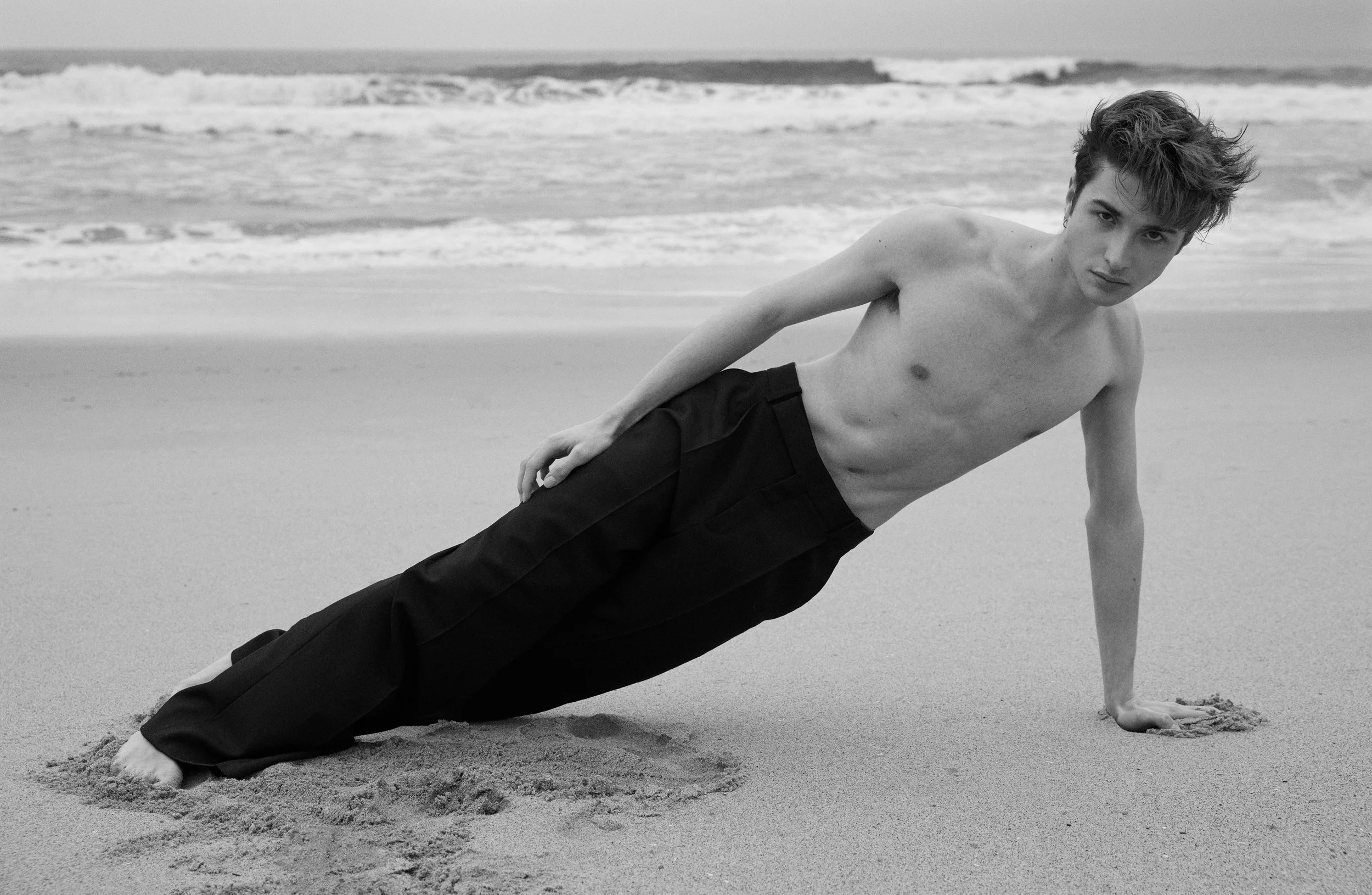Shimmering on the flyaway paper of a cut magazine, the delicate sensuality of a pale male silhouette has something of a renaissance painting: the world of collage artist TheSkinnyType.
In a world where reality is but a Photoshop brush away from fiction Colombian-born, London-based Martin turns his source material of photographs into idyllic scenarios of love and poetic (self) obsession. A lo-fi performance that he achieves with little more than a sharp blade, a stack of magazines and an endless fascination for images.
But beyond the almost translucent quality of his productions, he carves out another reality: the idea that images are but partial stories that unfurl fully in the mind. From the Dadaists to the cover of Sergeant Pepper’s Lonely Hearts Club Band, Henri Matisse to Oscar Wilde, collage has long been an interlope media that artists have wielded to extend narratives well into surreal territory. Chimaeras and impossible situations come to life under the hands of those who see beyond the fixed reality of a flat page.
For Behind The Blinds, he lifts a corner for a peek into the layers of his world.
Your images are usually quite sensual, but there’s more about the factual nudity of the Antiquity, rather than the provocative, confrontational, sexualized nudity of today’s world.
Agreed. Sensuality is obviously one of the main drives in my work. For me, sensuality needs some drama, needs to leave something to the imagination. To portray the instant before an action happens but not quite the action itself. That is something that classicism and Renaissance art do quite well. I’ve always been fascinated by classical art, especially the Greek approach to the human body and its concept of idealised beauty, maybe combining that with today’s wider and more transversal approach to gender and masculinity.
How did you become The Skinny Type?
I don’t have an artistic formation but I’ve always been fascinated by art, first as an observer then gradually as creator. I’ve also tried different mediums –photography and drawing primarily– but somehow it was through collage that I found consistency on creating constantly, which I really, really enjoy. I work in architecture, designing structures for buildings, so this is more of a hobby for me. I guess the enjoyment of being meticulous and spending time and energy in small details is the connection between the two.
Theskinnytype started with myself. I have always been very skinny, perhaps too much, and it took me a while to feel comfortable with that, to learn not only to accept this thinness but to love and celebrate it. When I started creating collage, it felt just natural to use the name as my artistic pseudonym.
What was attractive about the non-digital process of making collages?
I love doing things with my hands, especially if they need to be precise and time consuming. I also love the constraints that the analogue process imposes on you. On digital works the possibilities are endless. You can manipulate and adjust an image as much as you want – that kills the magic for me. On the other hand, with analogue collages, you are constrained by the physicality and rigidness of the raw material. Backgrounds, size, colour, you name it, which for me adds to the excitement when two different images actually come together to generate a new story or composition.
You’ve started to superimpose layers of analogue images as well. Why?
The layering started by chance, just by looking through a page of a magazine against my window and discovering how beautiful the combination of images from both sides of the page were. It’s like a different kind of collage, less realistic but with the ultimate constraint: I cannot decide which images I superimpose nor the relationship between the two. It needs to be there already and come together by chance so my role is less about creating than about discovering something that is already there – more like curating, perhaps. I also like the fact that because I have no control over the mixes, I’m more willing to incorporate elements that I wouldn’t choose for a normal collage. These superimposed images look amazing in lightboxes as the work only comes alive when the light is on.
What makes the cut? How does a collage start?
There is a lot of trial and error and the process always bring surprises. Sometimes I think two images would perfectly match and only after cutting and trying do I realise that the sizes are wrong or the composition doesn’t work. During the process, there is a lot of adjustment and diversion from the original idea – that’s the fun part!
By contrast with more traditional collage, my works aims to create a composition that looks real but at the same time creates a sense of disturbance, as there is always something that is not quite right about the final image. You can see it is artificially put together but can’t instantly understand how. I’ve always enjoyed seeing friends with a collage in their hands trying to find out where the cuts are by sliding their fingers against the page, as they cannot work it out just by looking at the work. There is a lot of treatment of the cut edges to make them vanish in the composition and there’s no digital retouching whatsoever.
How do you select an image for your work?
The selection has always started with a feeling; a desire to cutting an image and forcing someone else into an interaction that is unreal. A fantasy would perhaps be a better description. A constant in my work since the very beginning has been collages that create a sensual interaction between one guy and himself. I call this series “Narcissus dreams”.
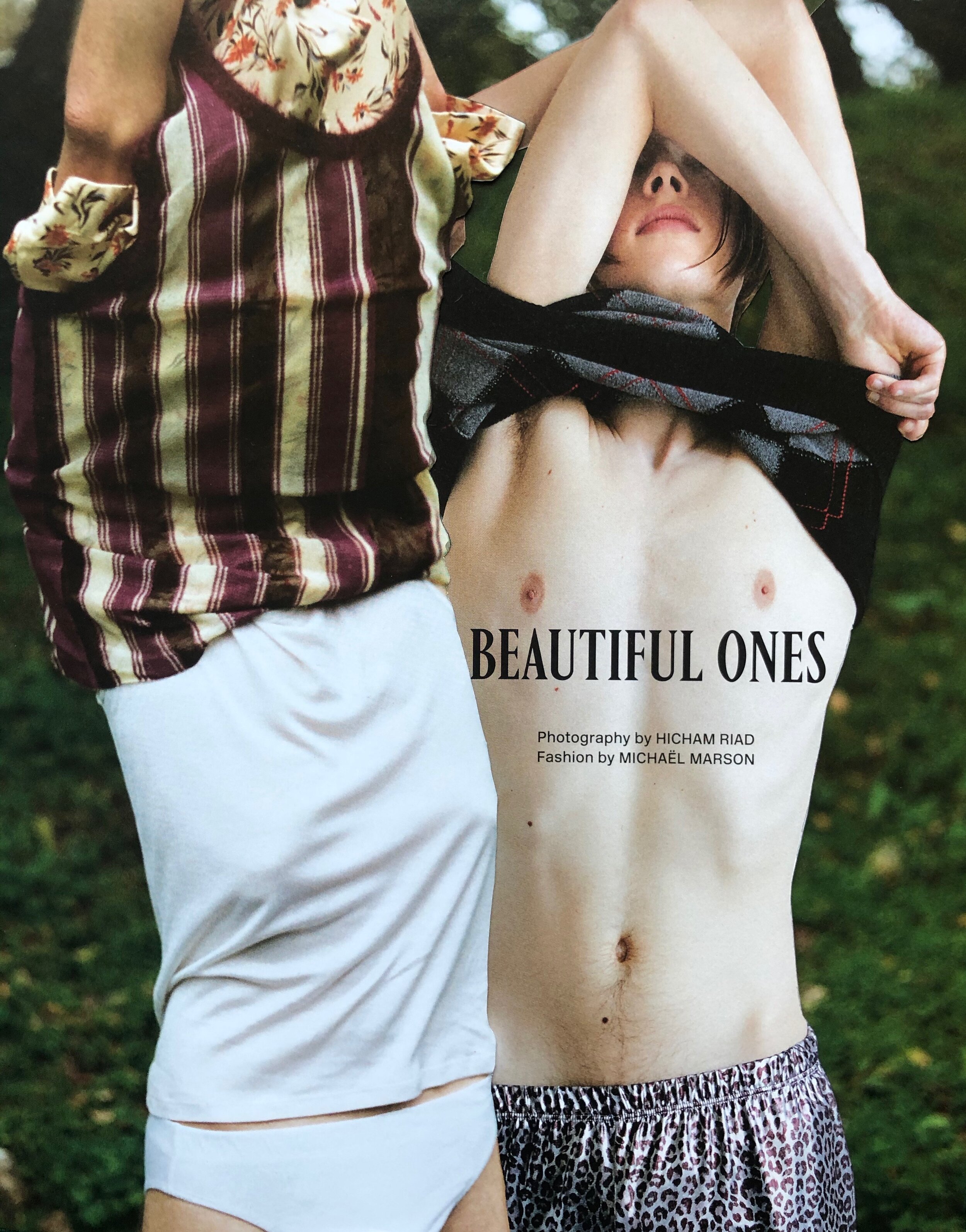
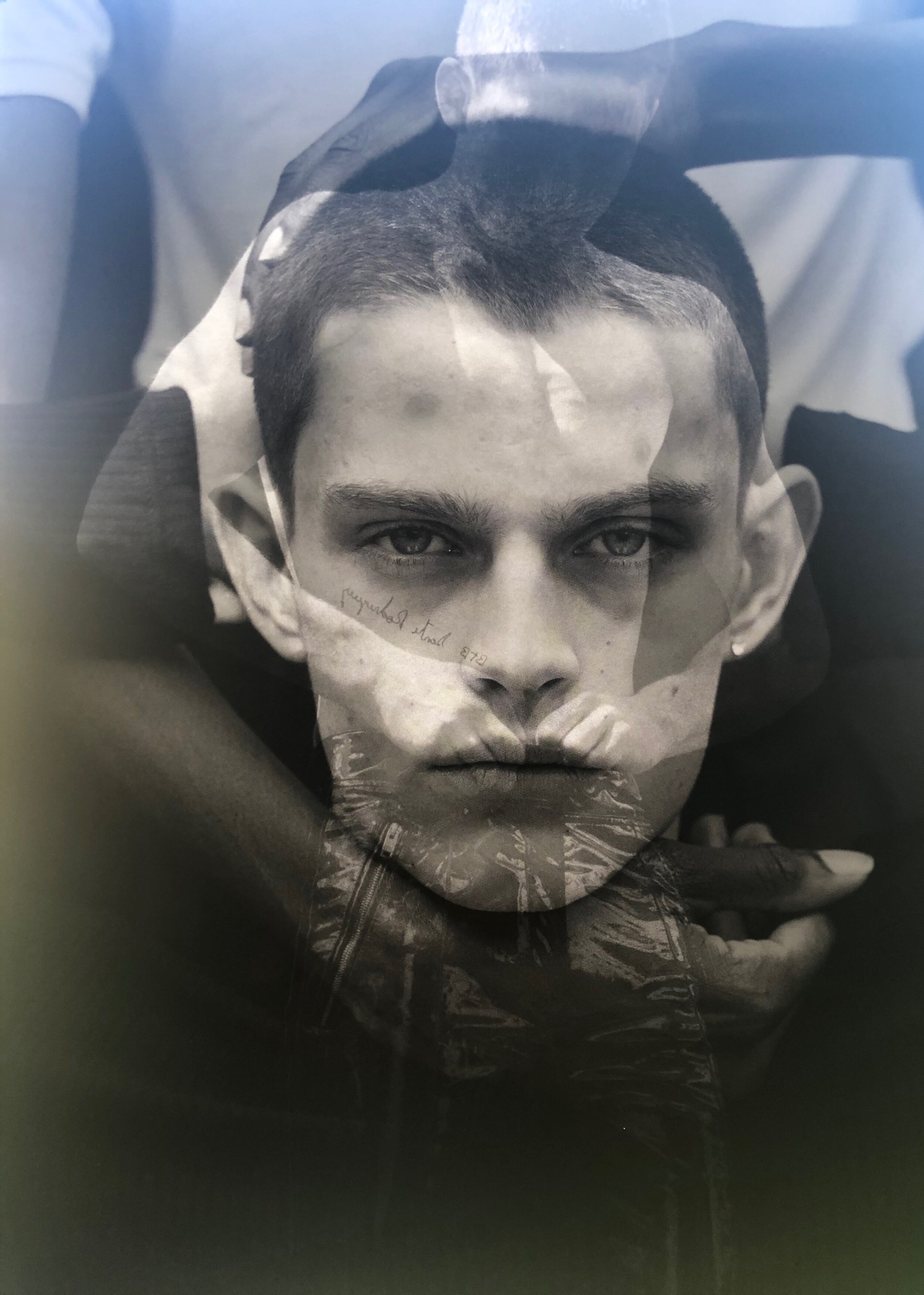
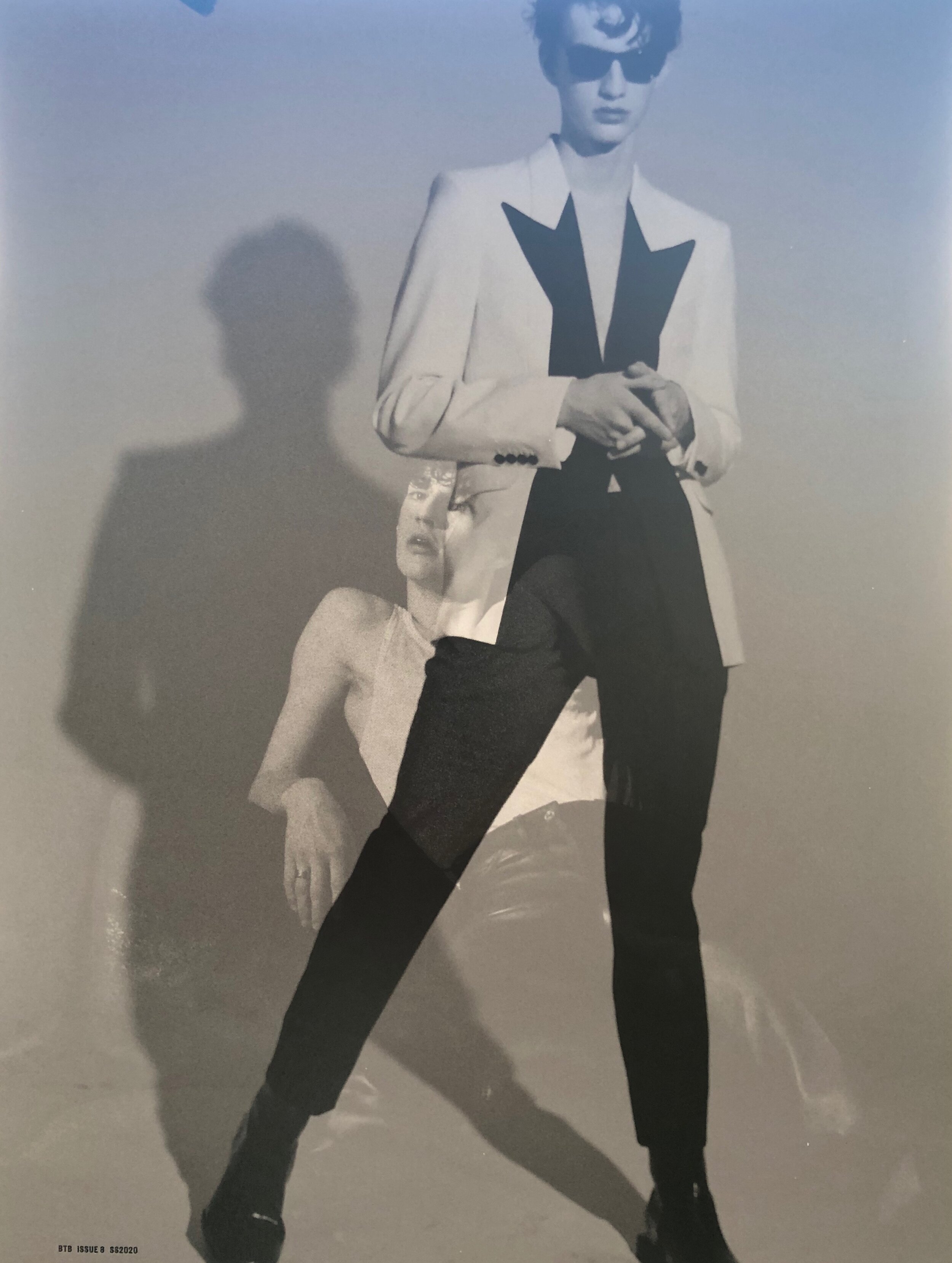
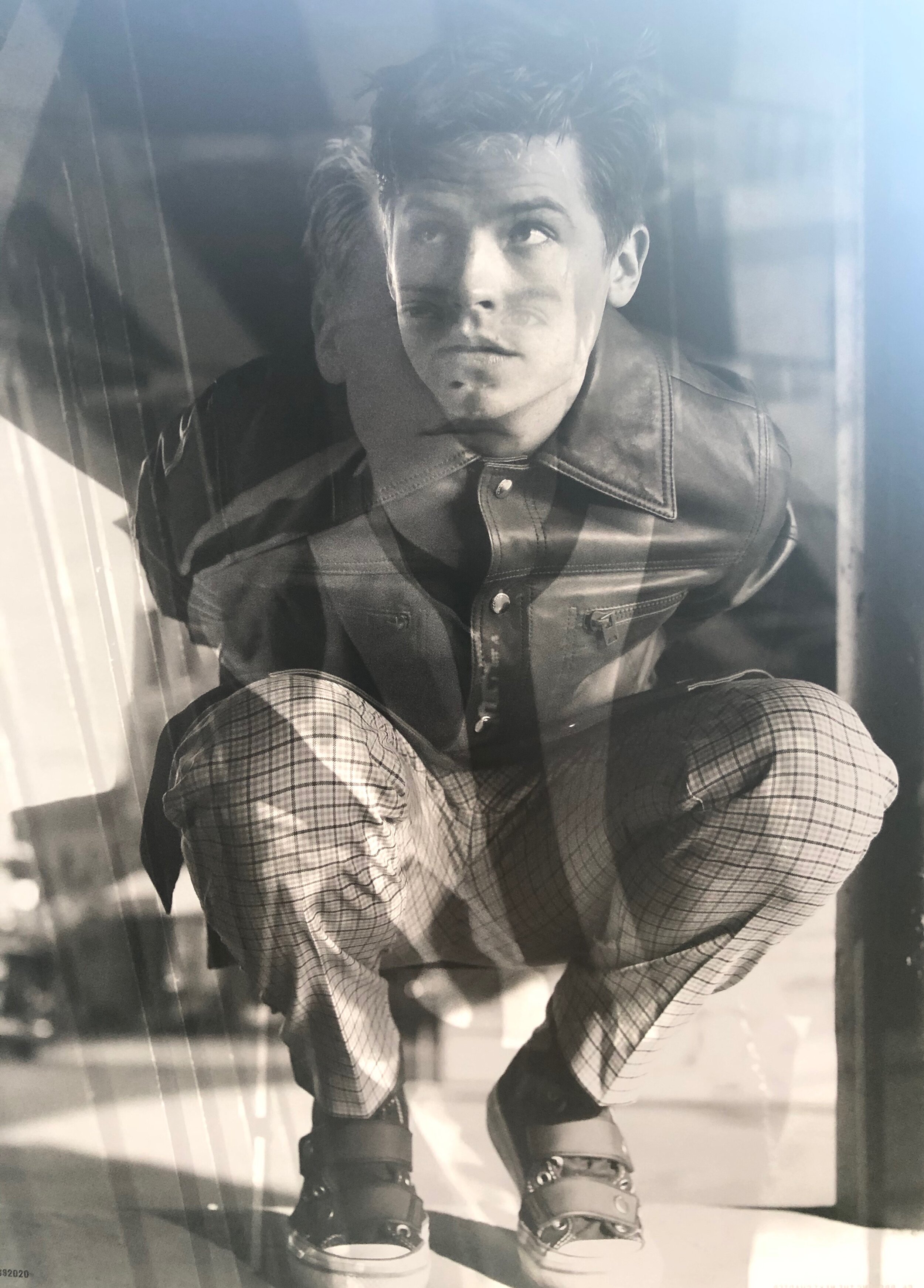
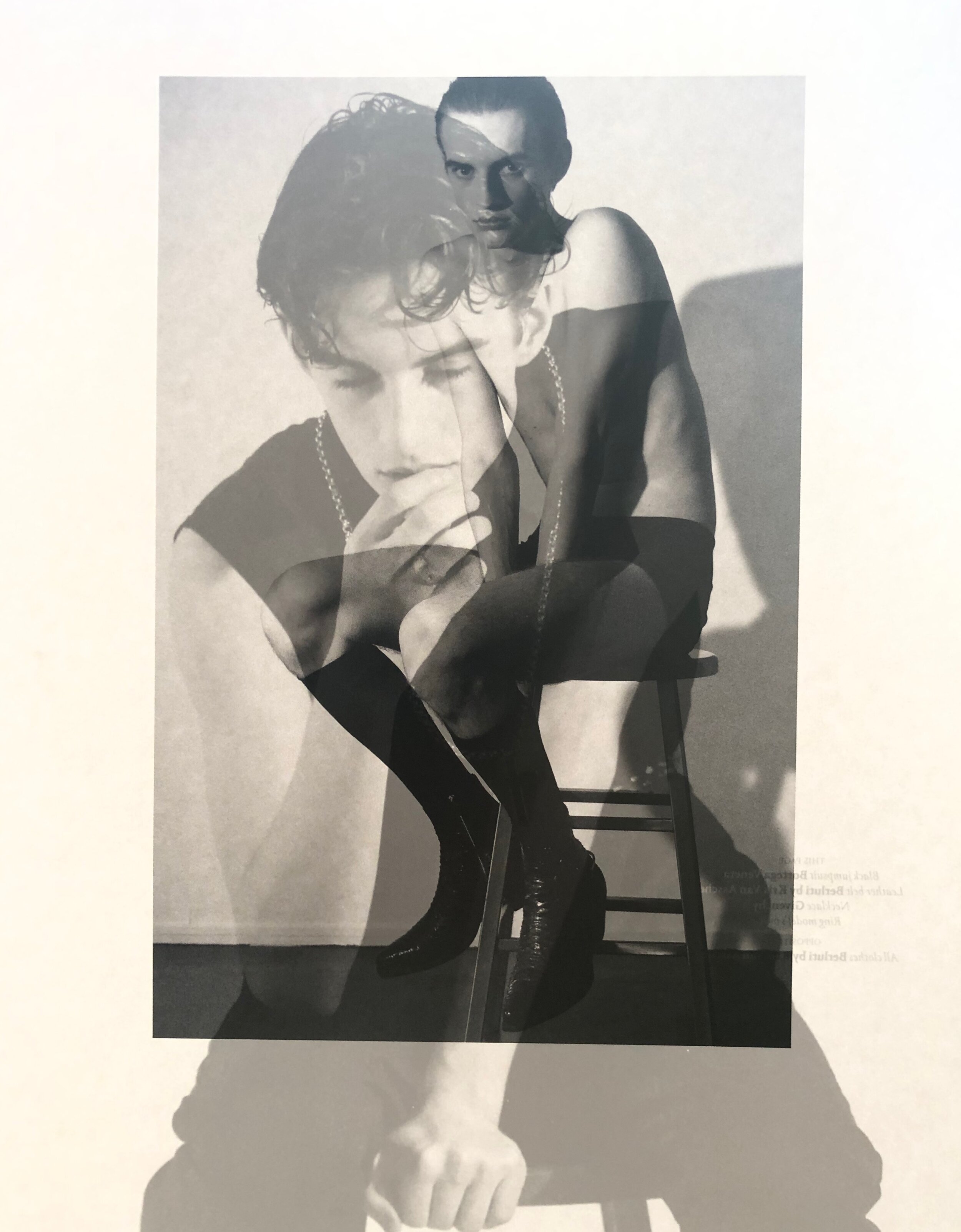
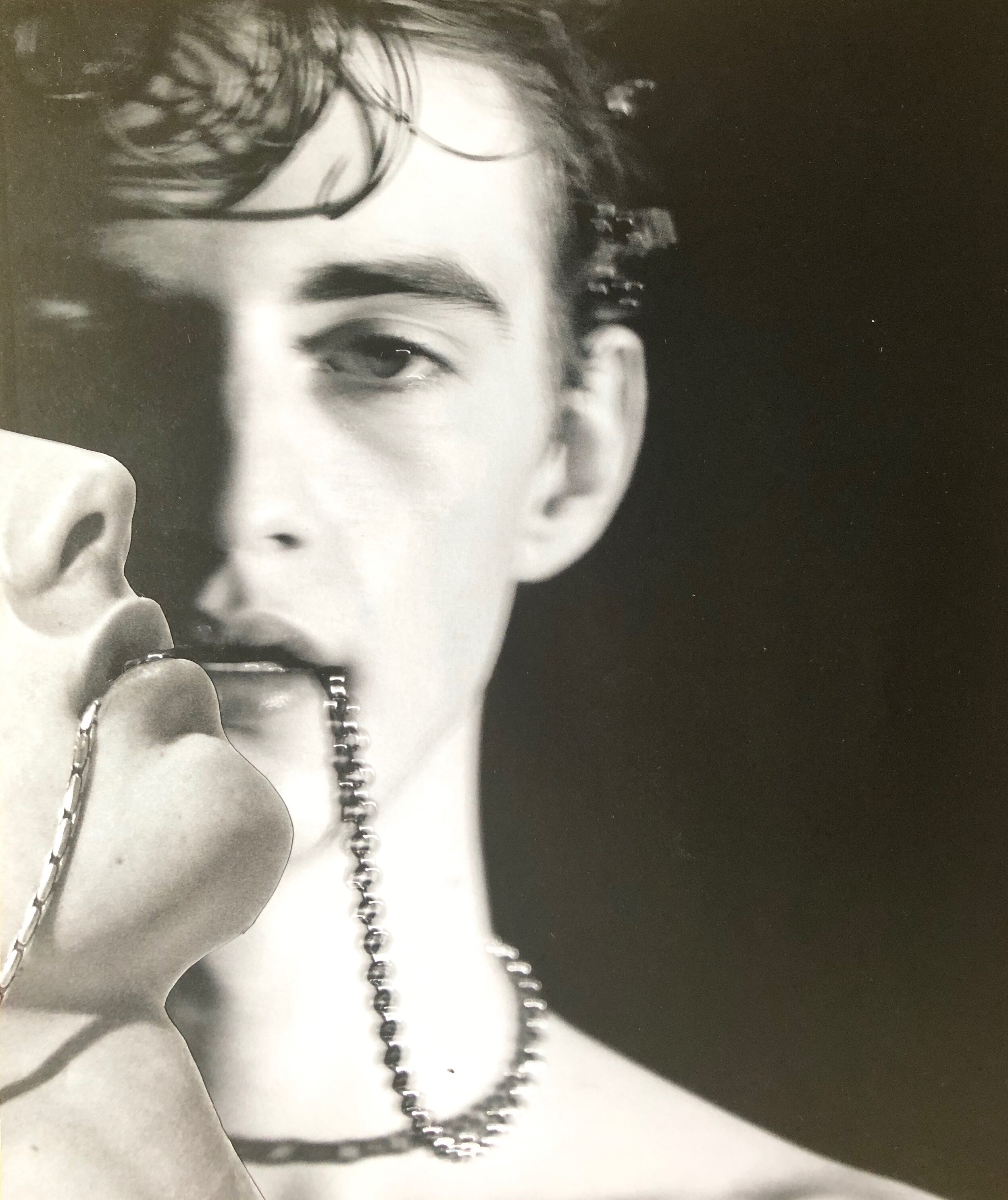
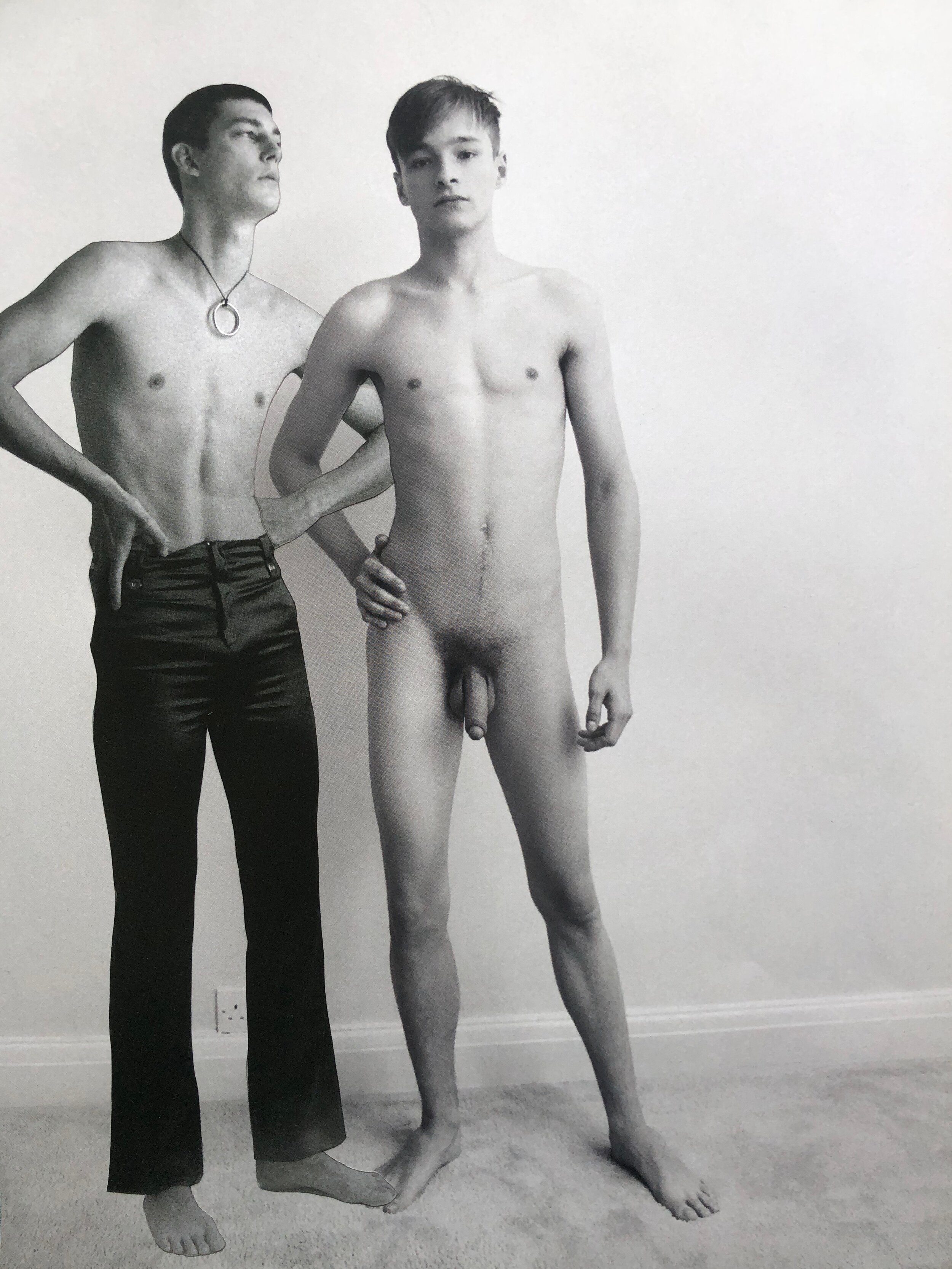
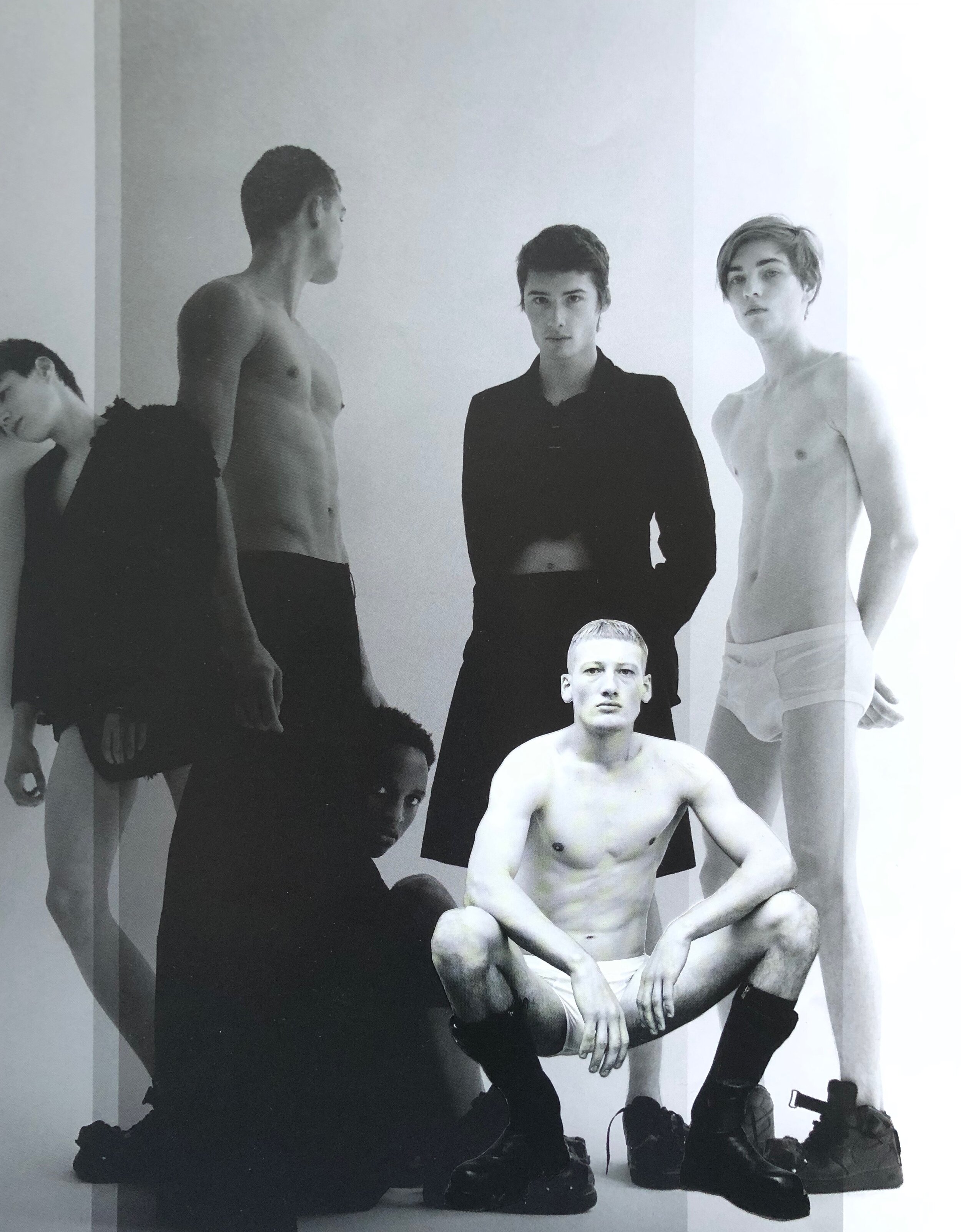
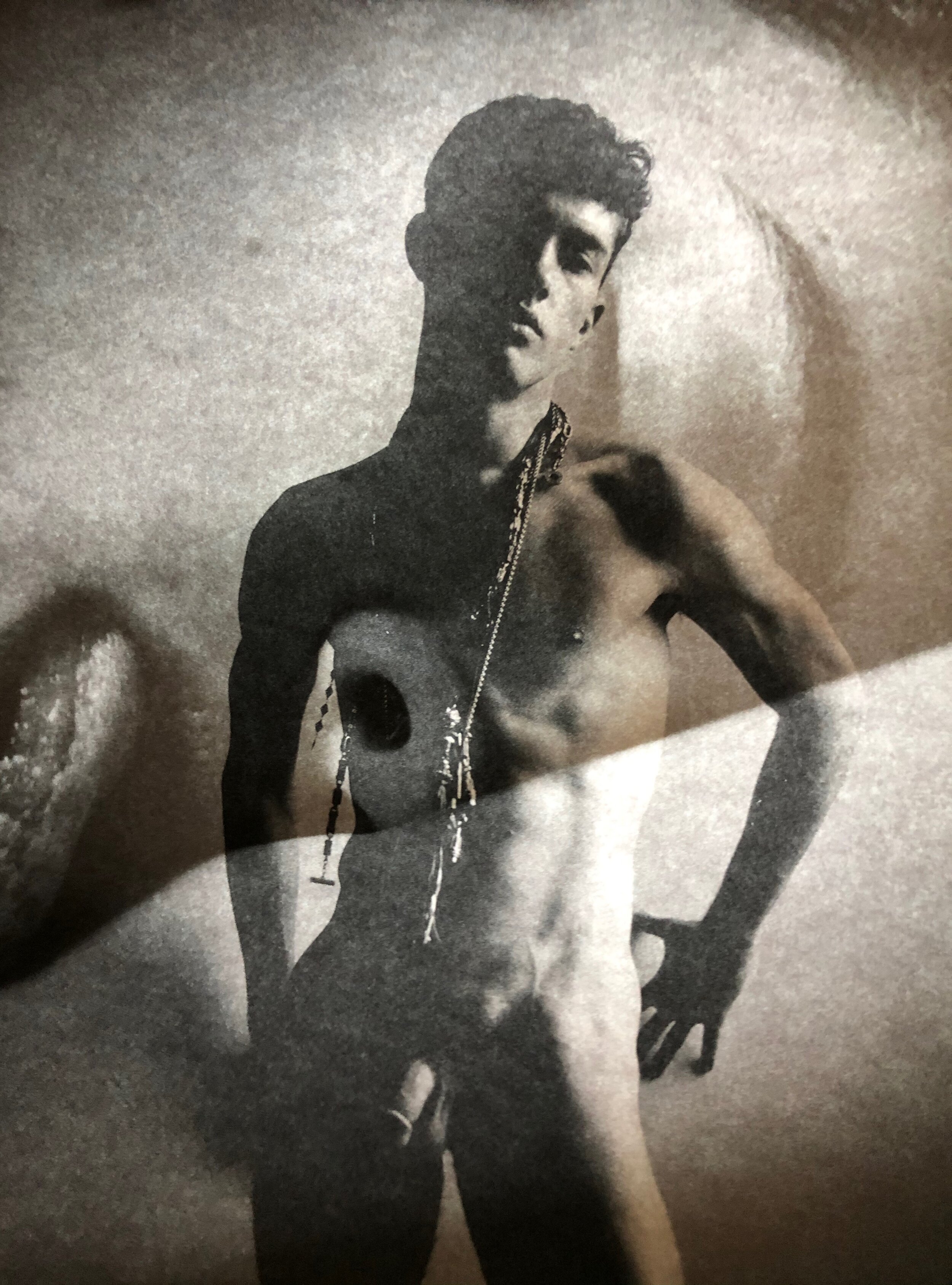
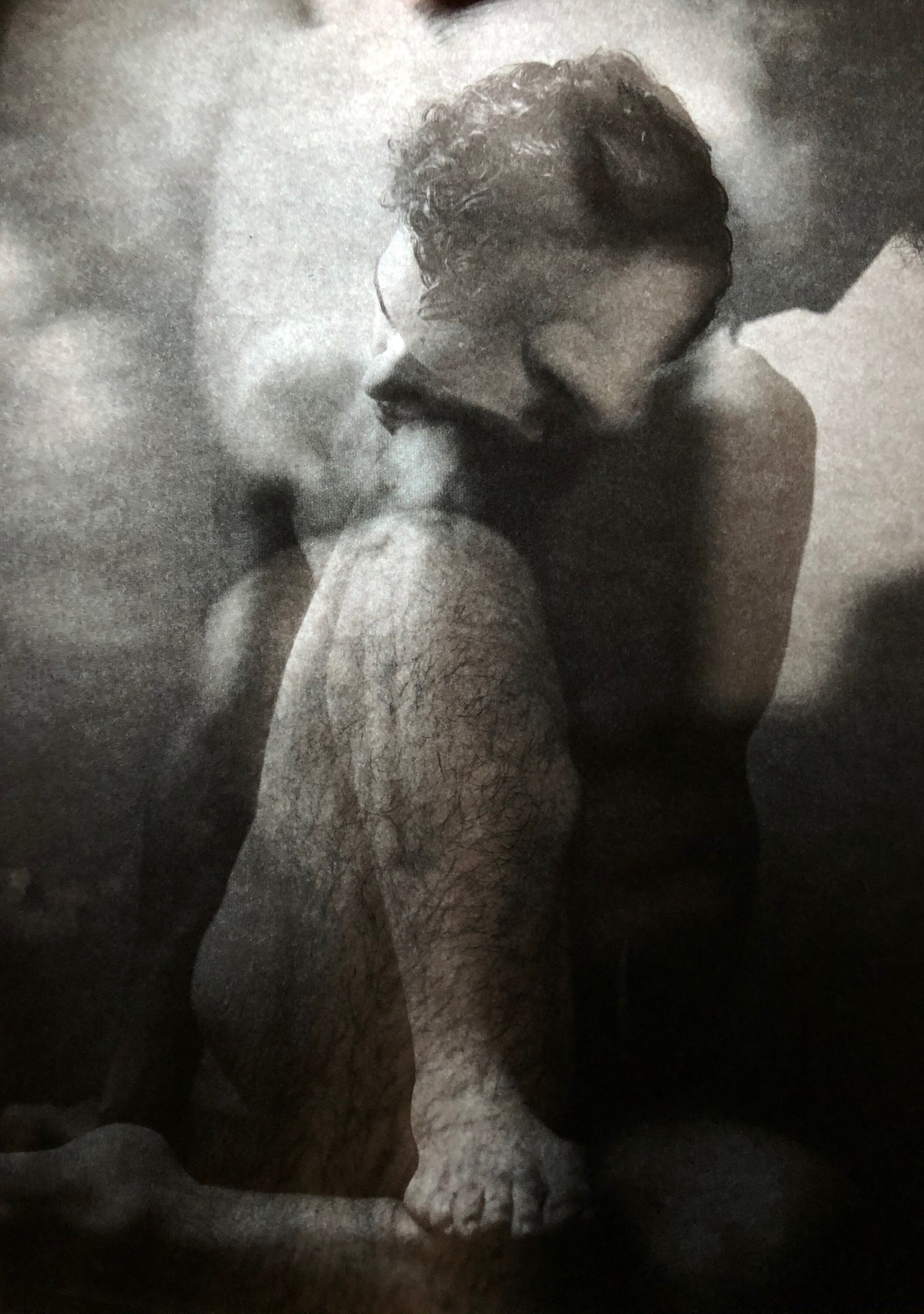
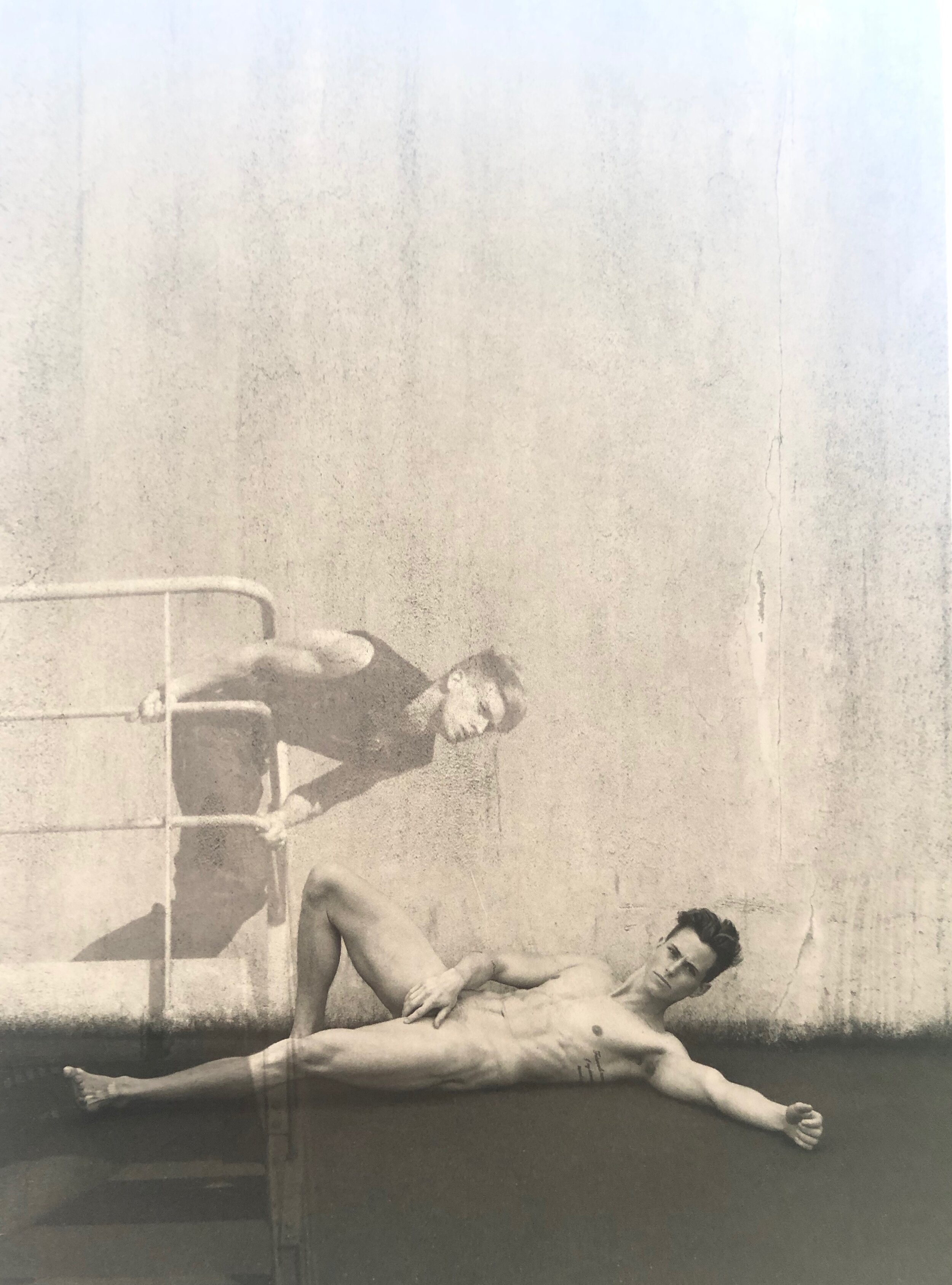
Is there a story behind each of your images? Or do you create them more to express a feeling?
More than expressing something, I think I create them to materialise a fantasy. The original images have to instigate something in me but the final work has to tell a story. I love how mixing images conveys a completely different story or feeling to the original images taken in isolation.
What’s your preferred source material?
A handful of magazines mainly and of course some books from photographers I love. It is very interesting how you connect with other artists’ work and how what I do, I think, adds another layer to already amazing works. I’m constantly searching for images of photographers I like and to discover new ones. Even more relevant, I keep finding a connection with the people who curate those works for magazines; it is no coincidence that most of my works come from a few sources and photographers. Behind The Blinds is obviously a clear case. I discovered the magazine’s second issue and have never missed one since.
Interview by Lily Templeton
